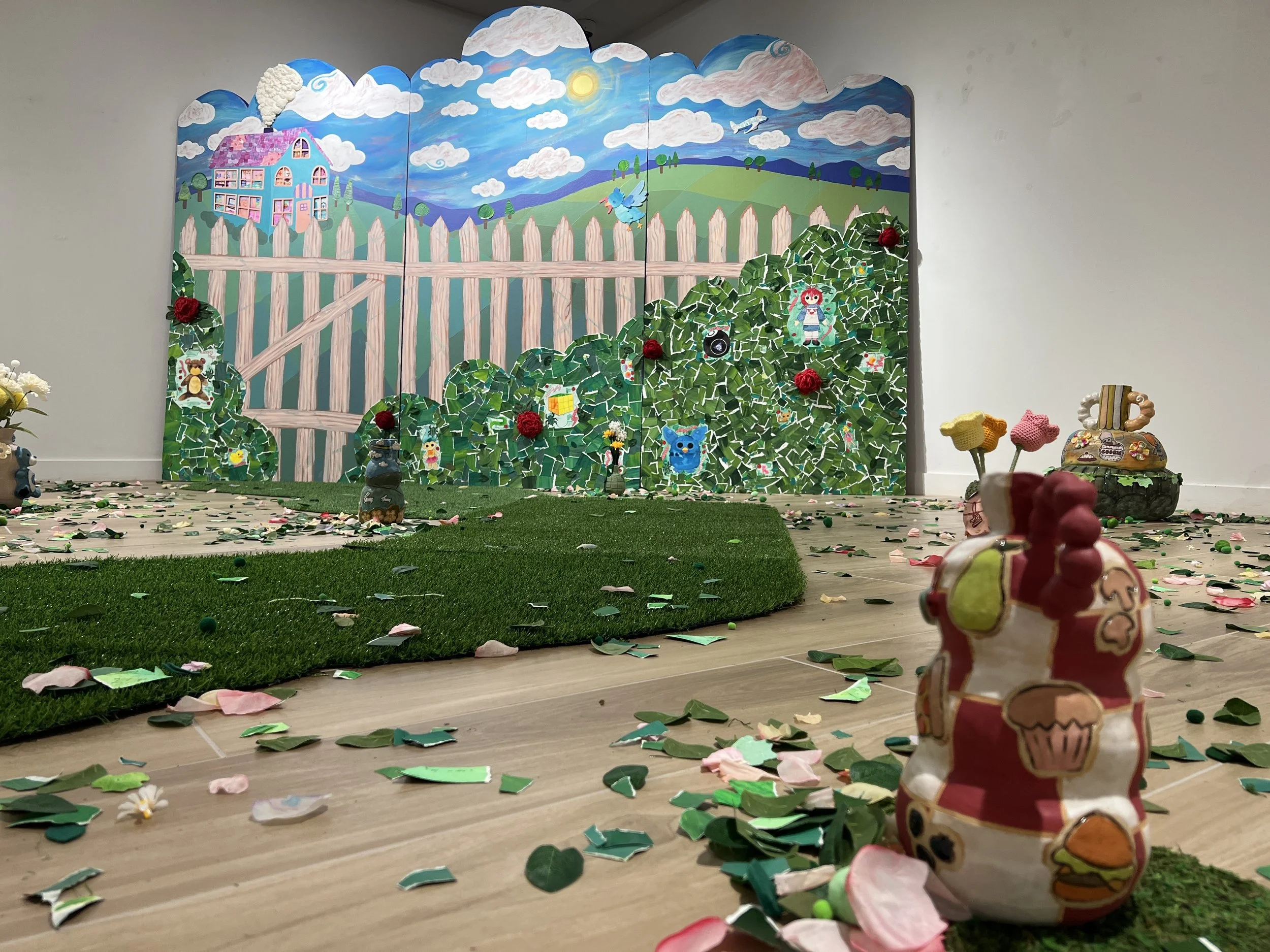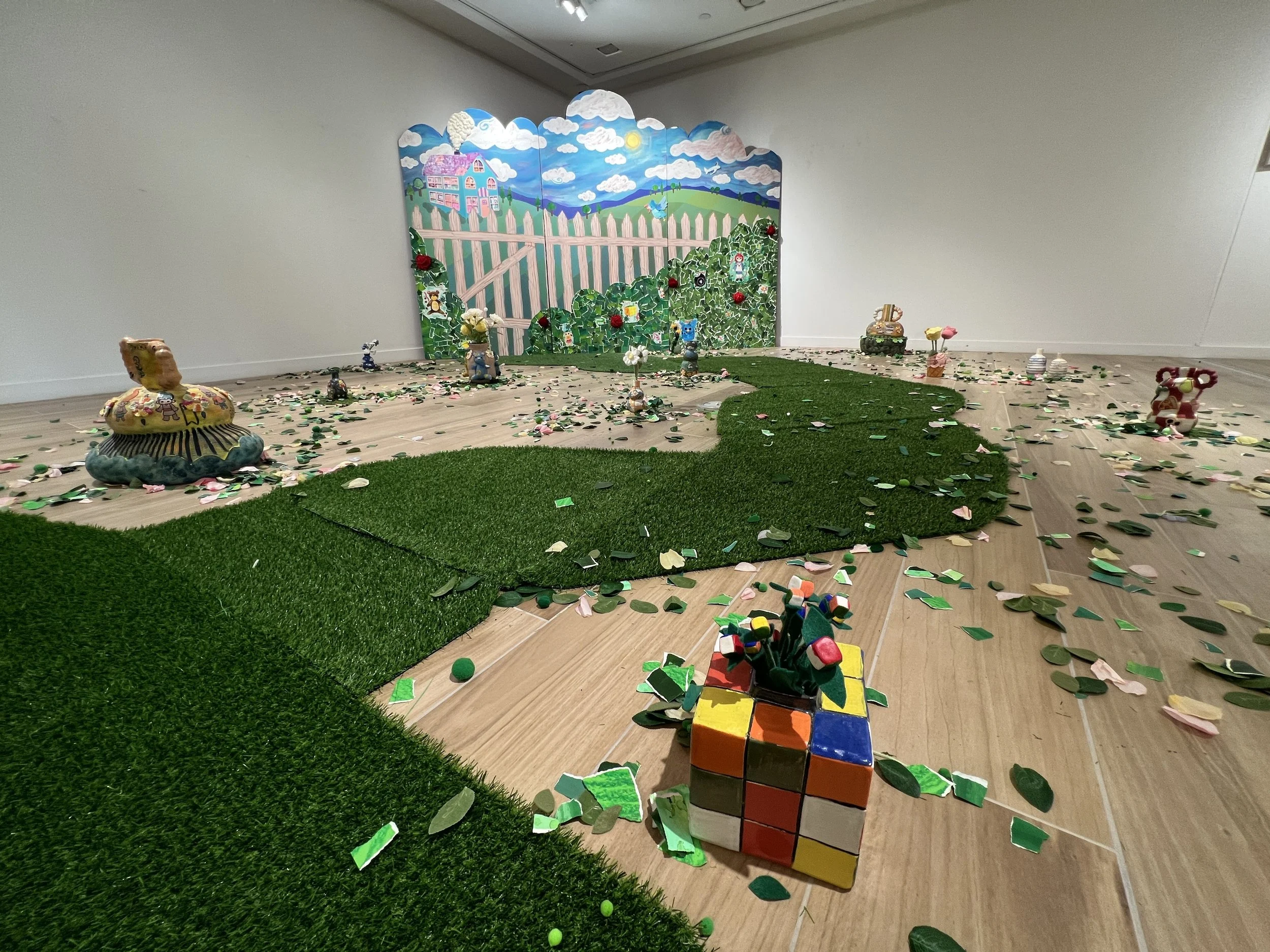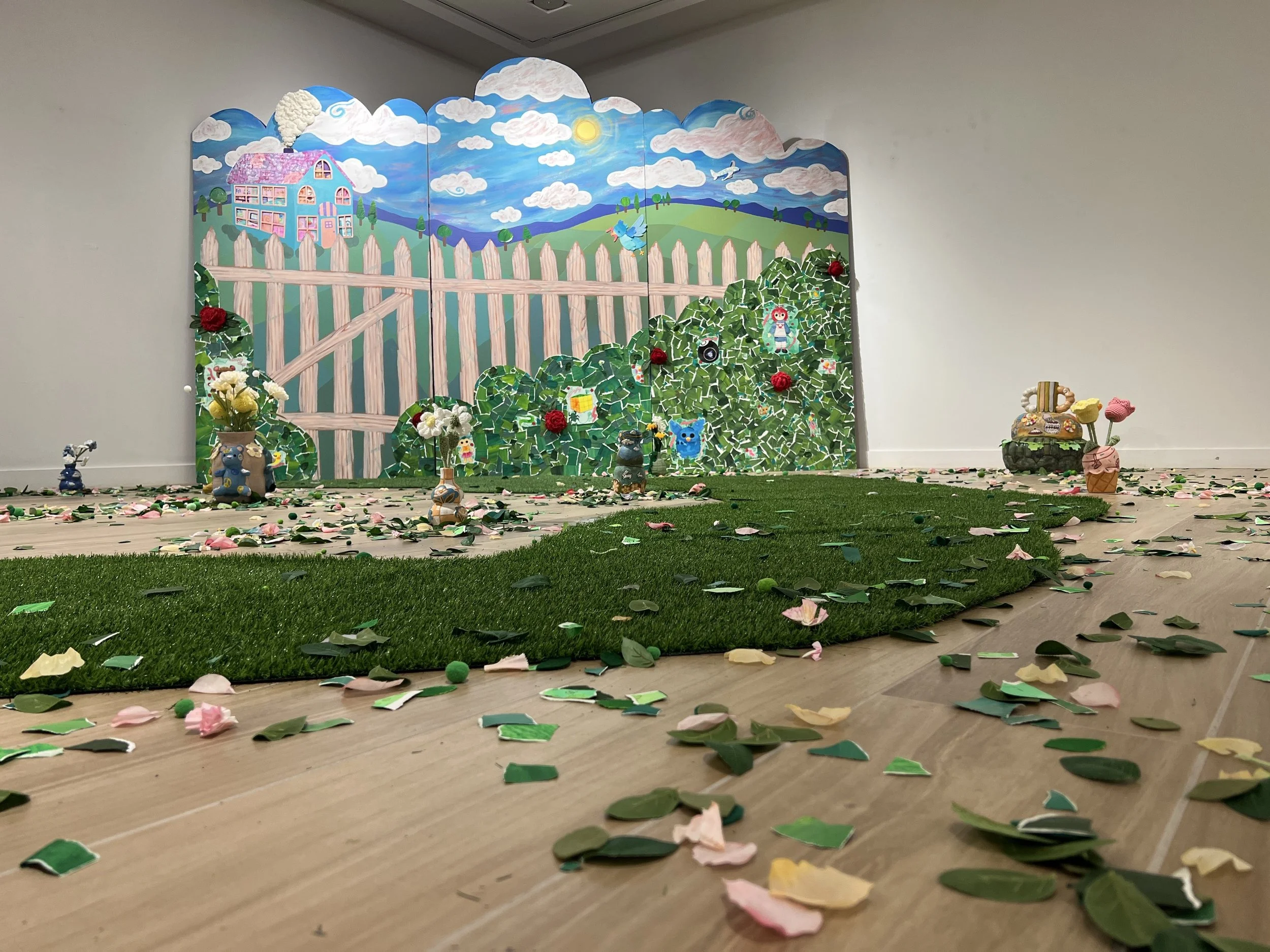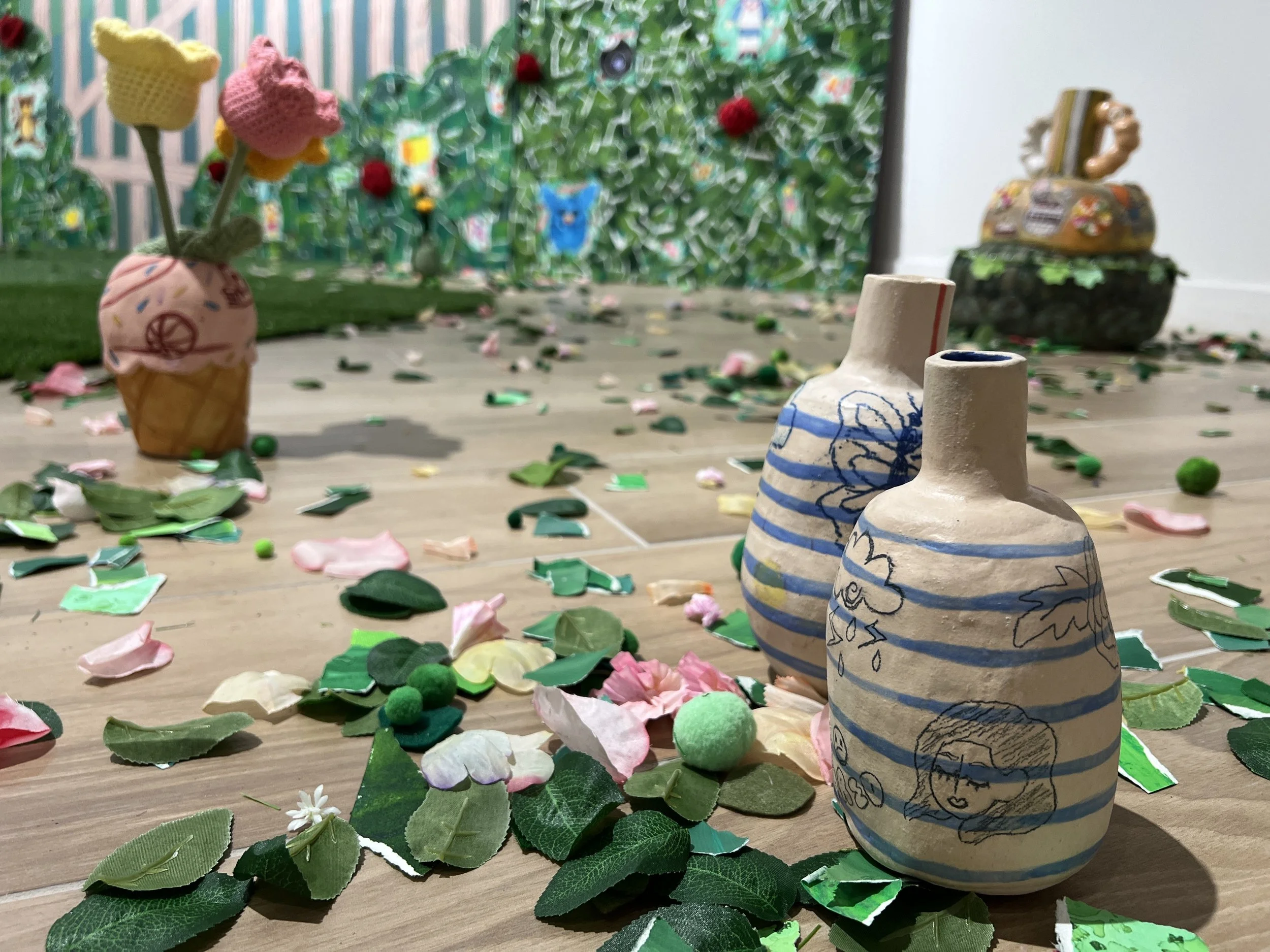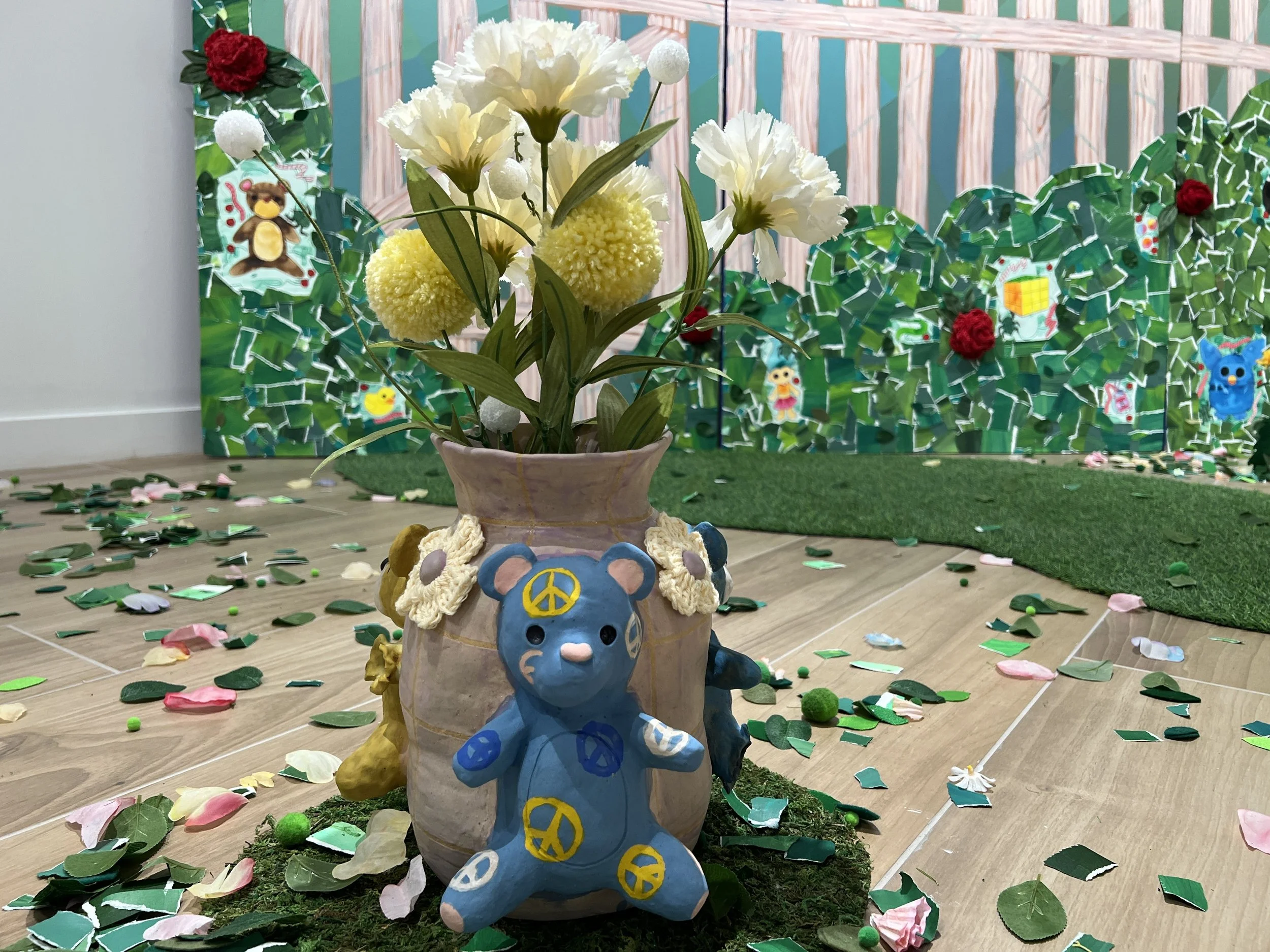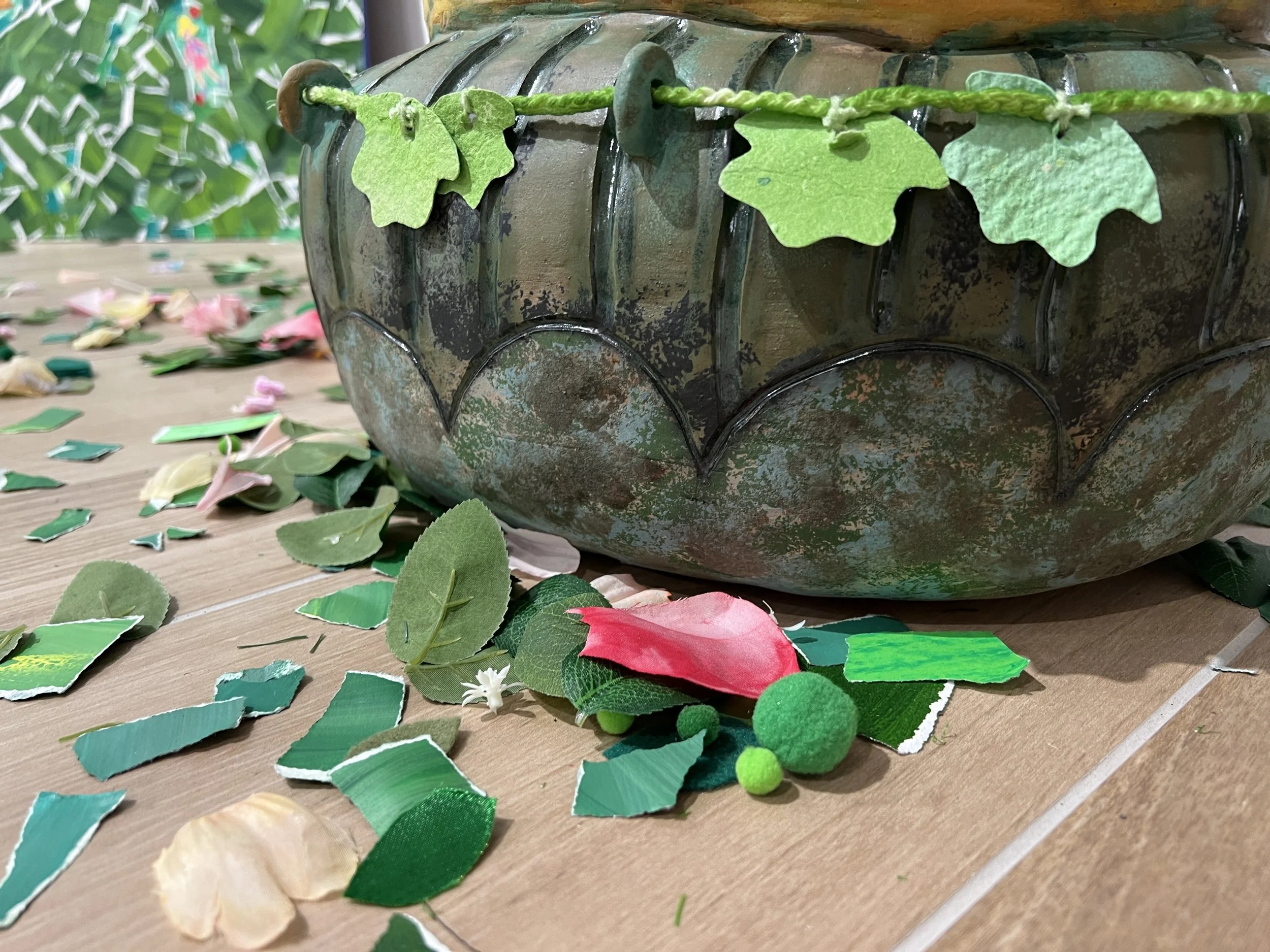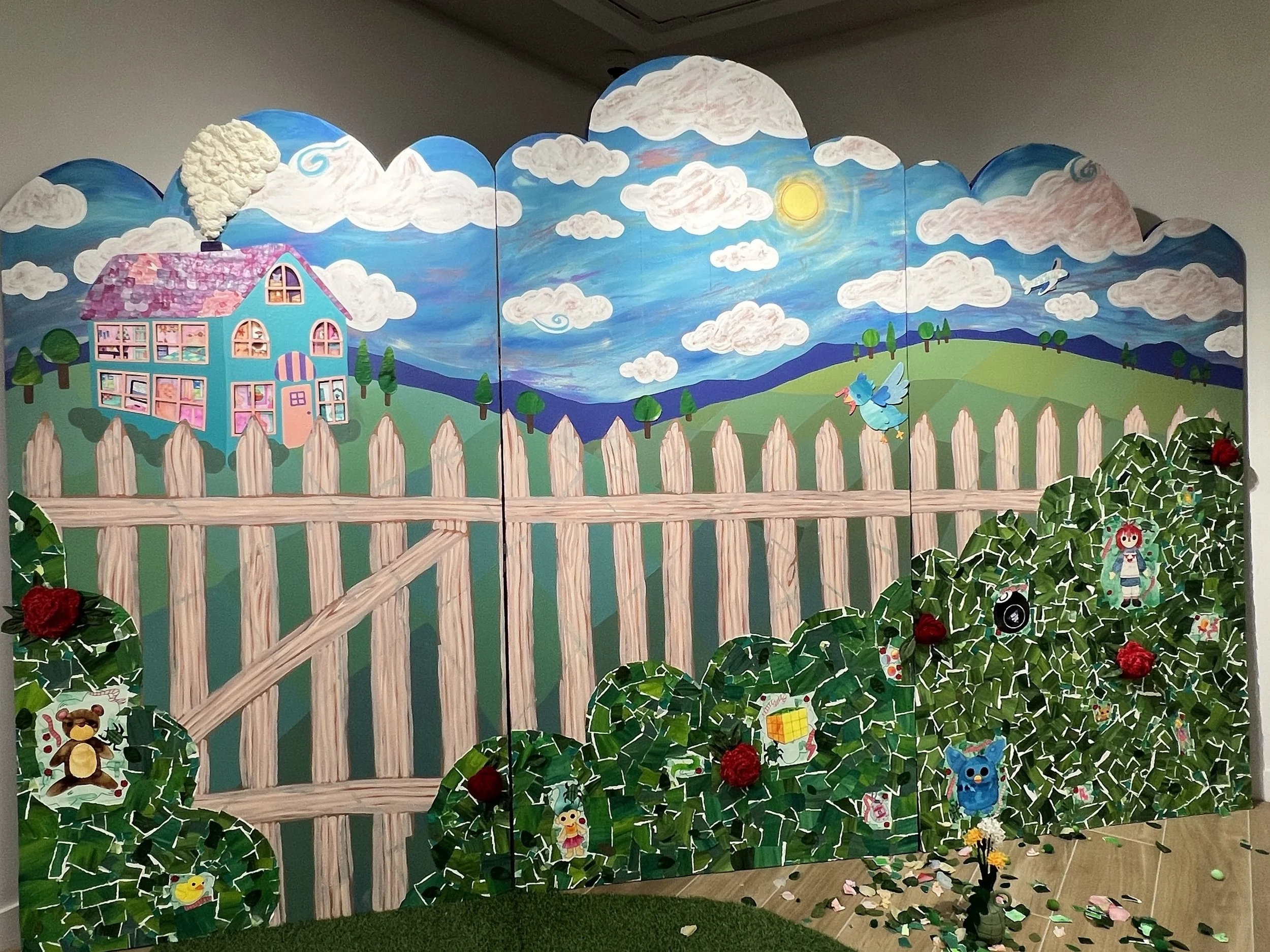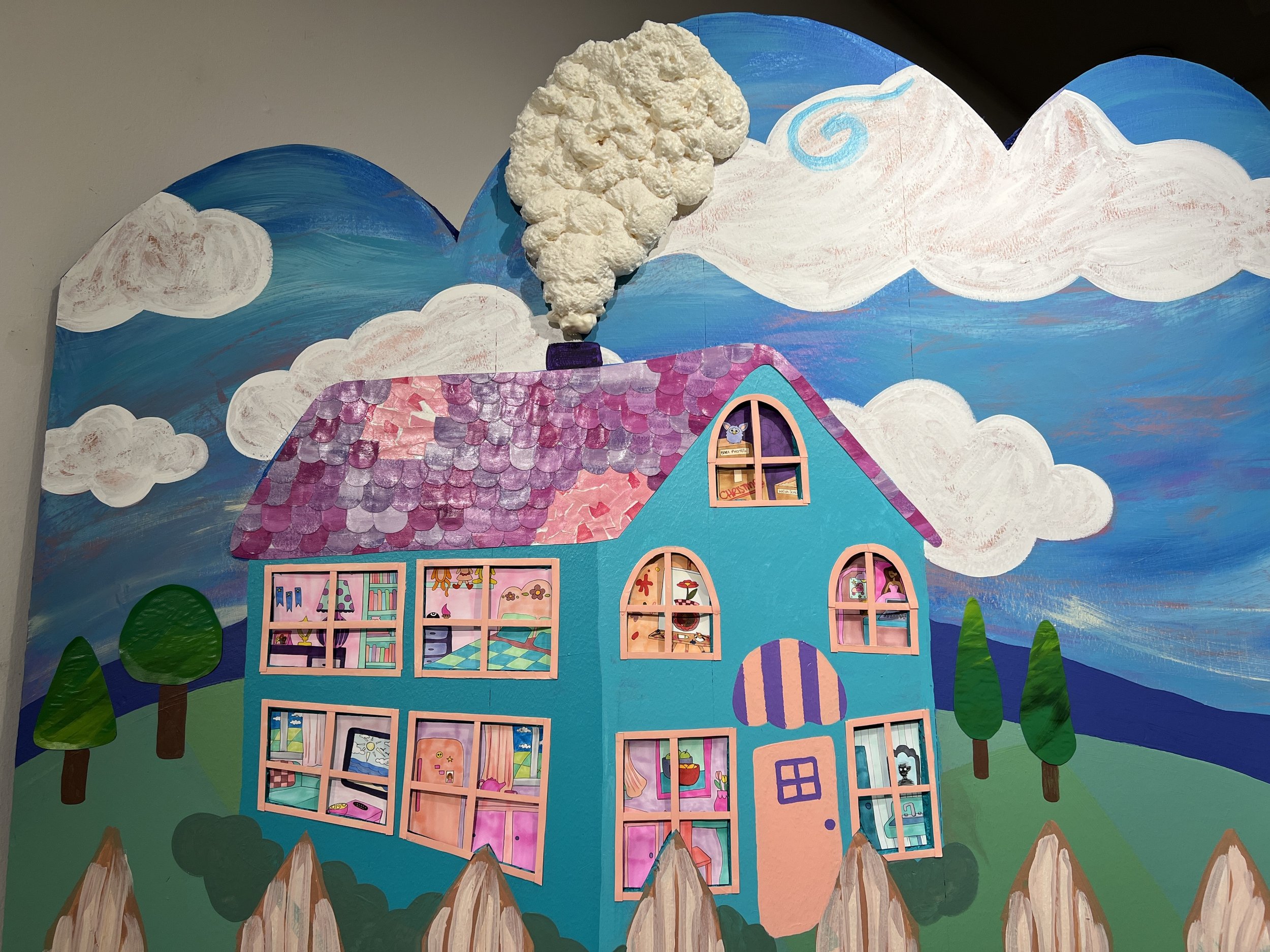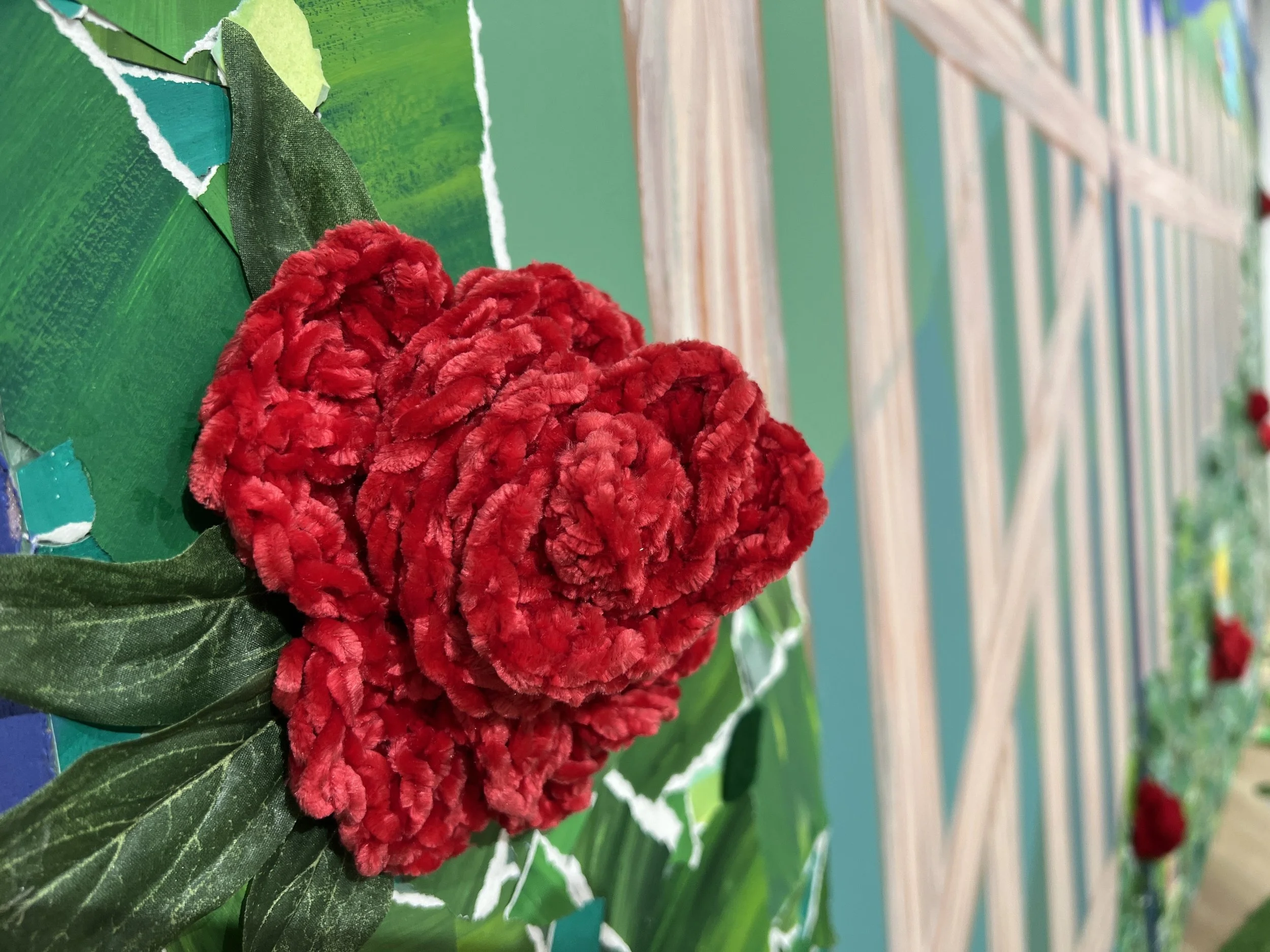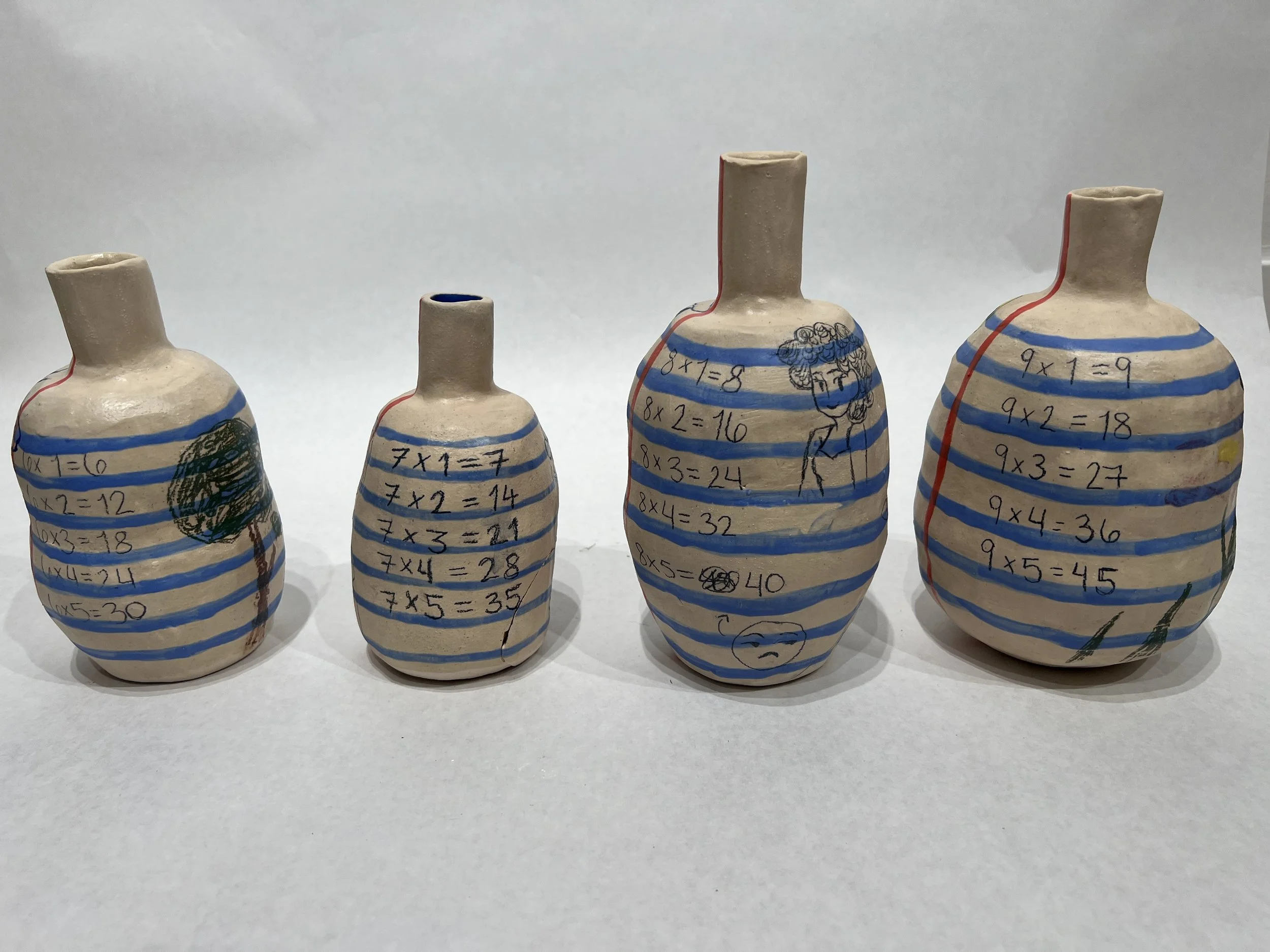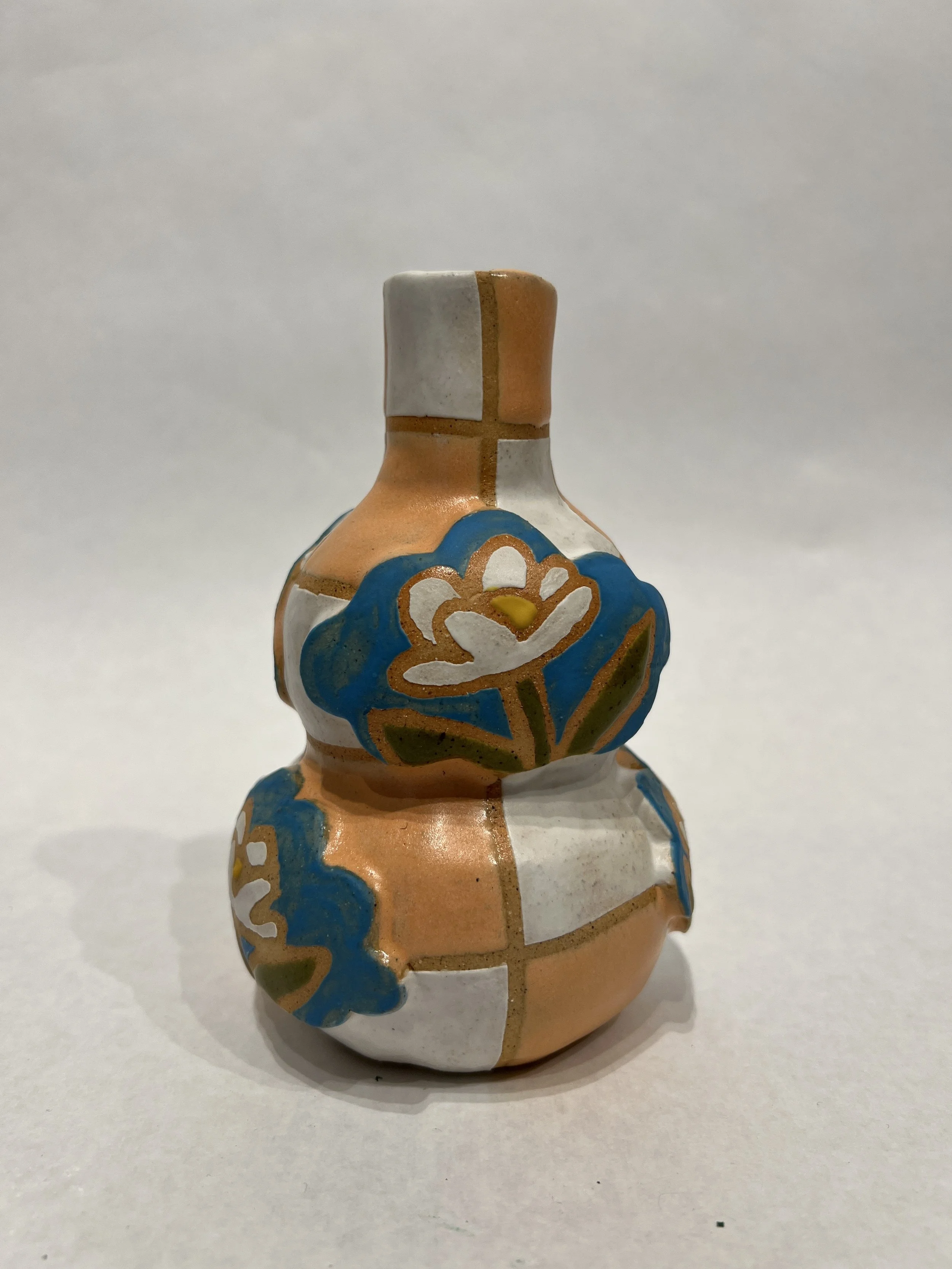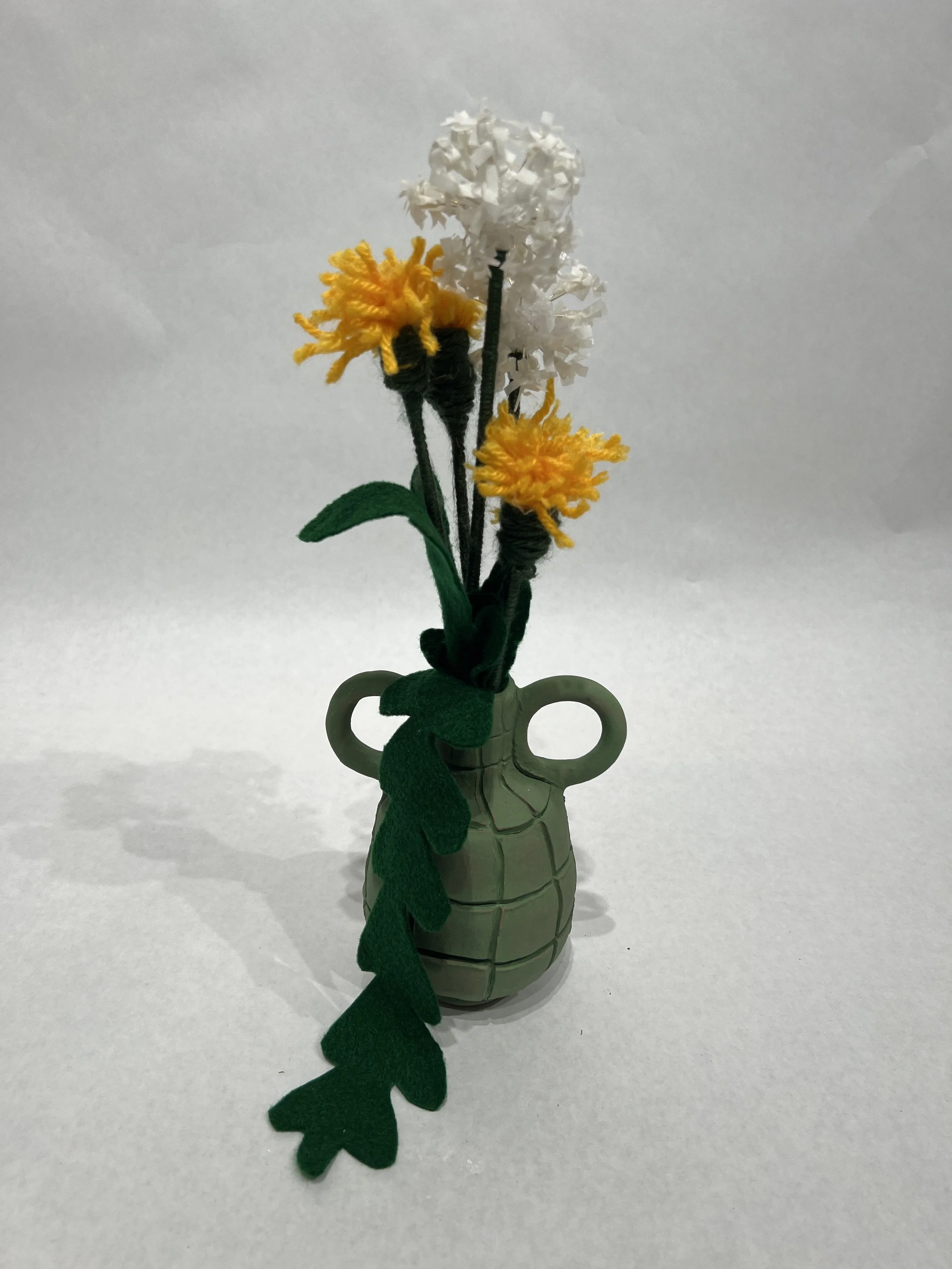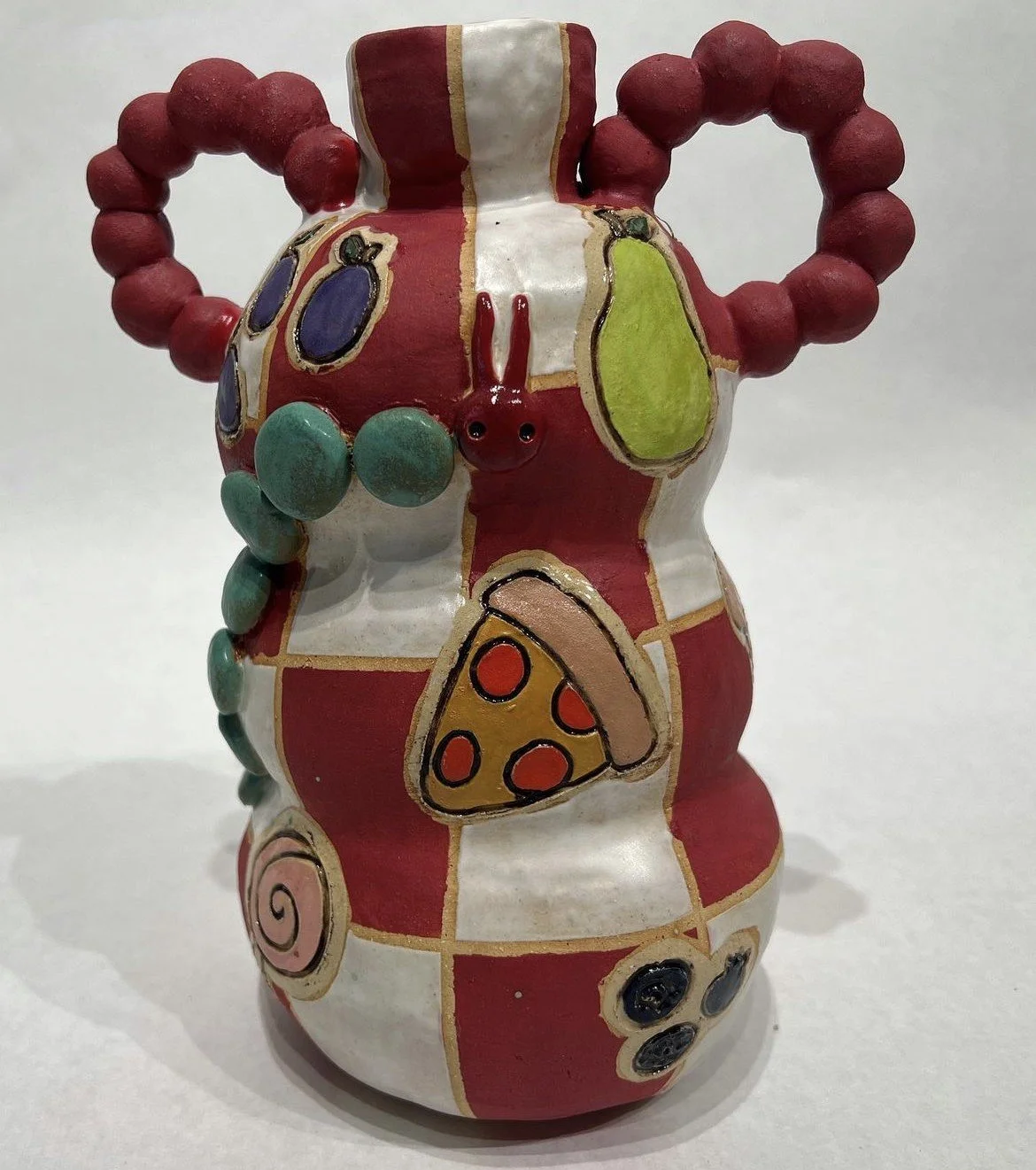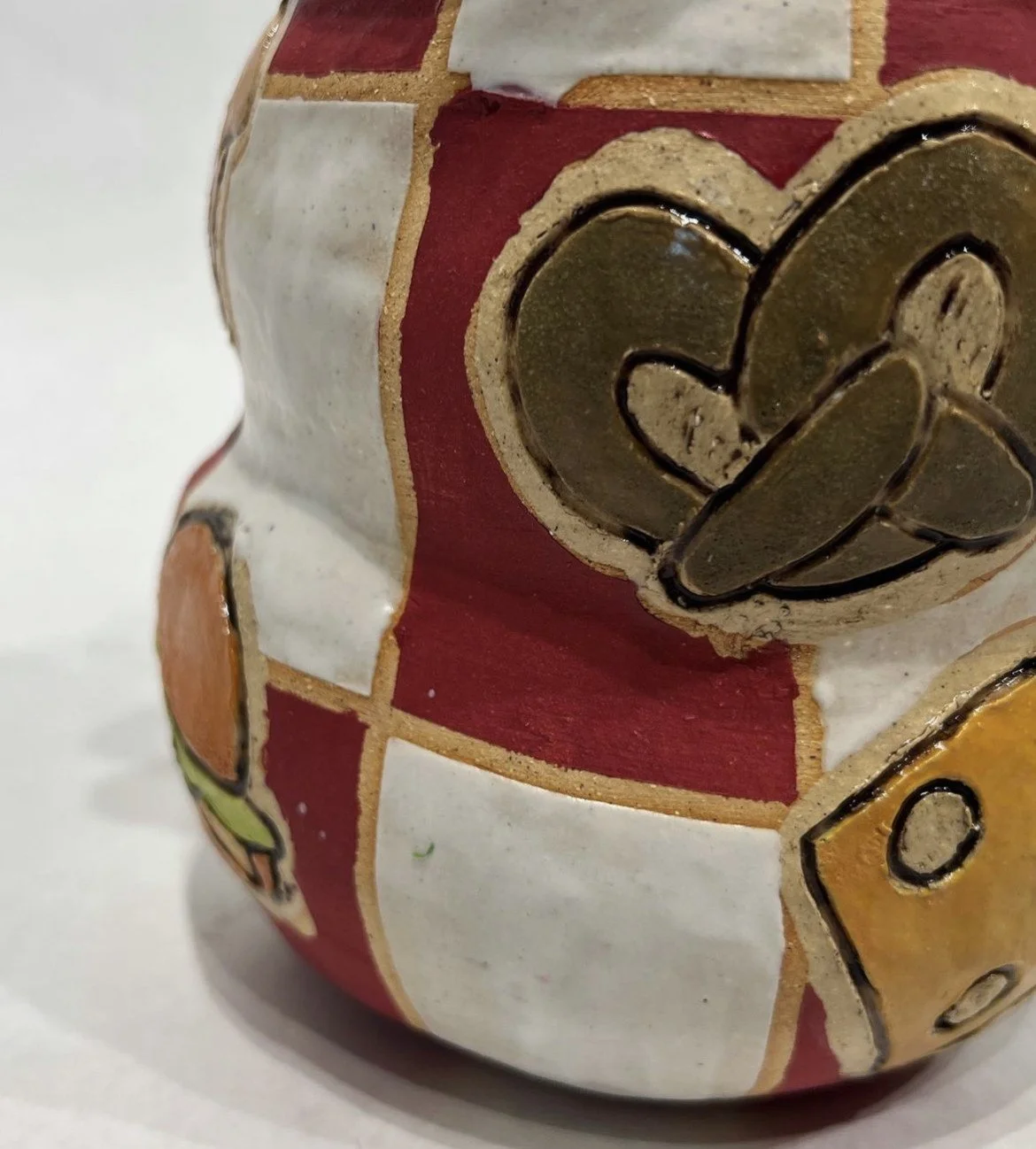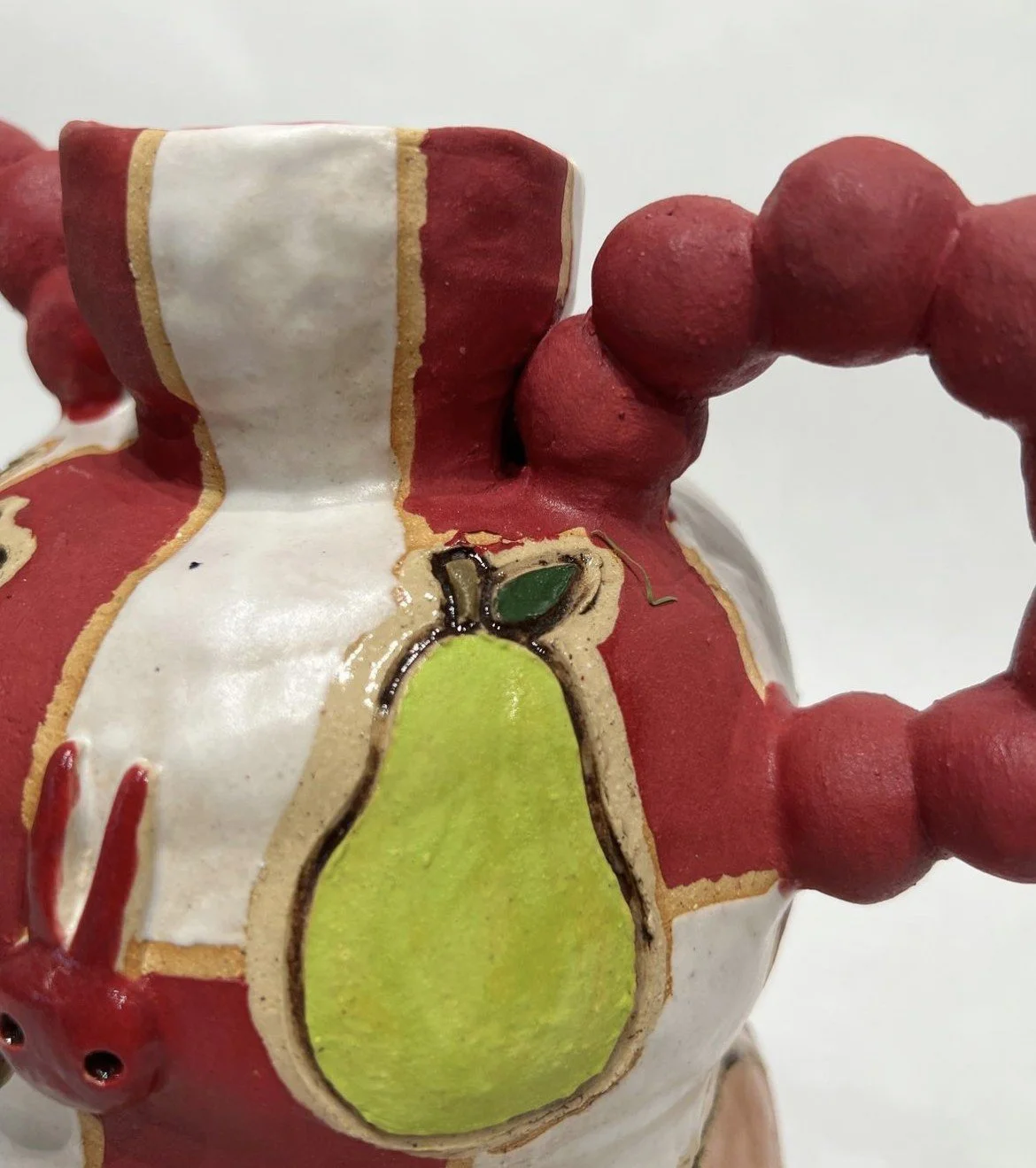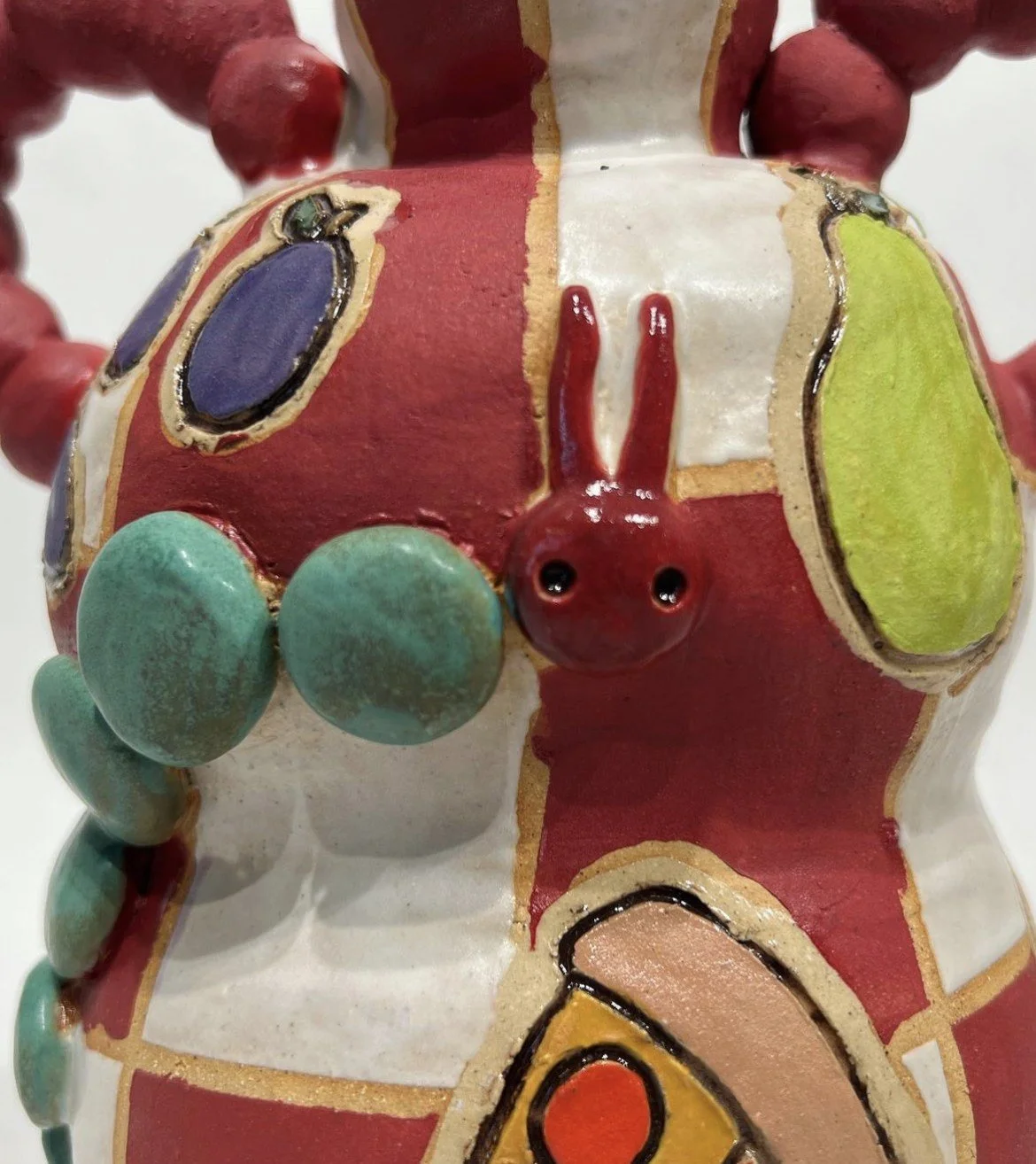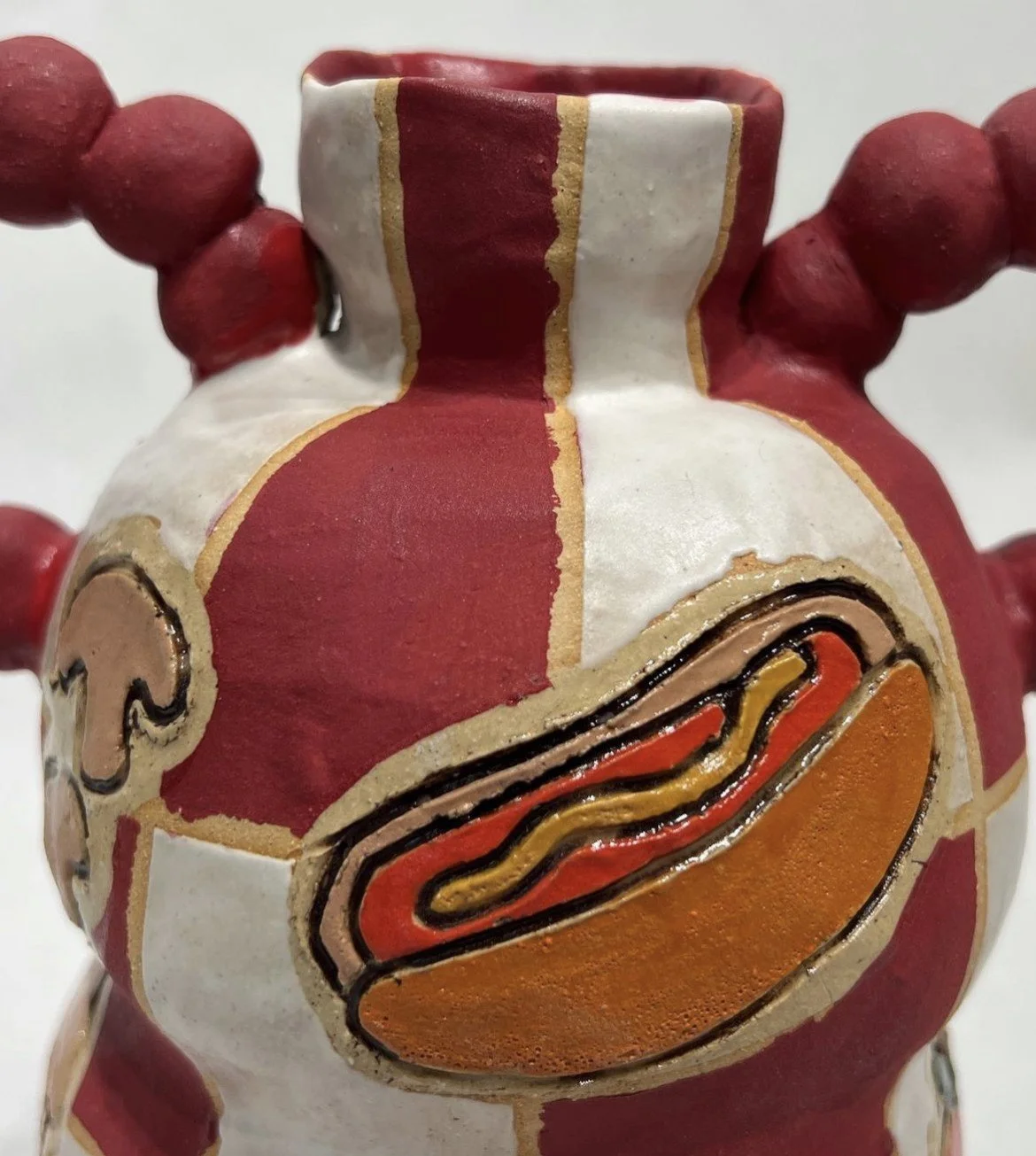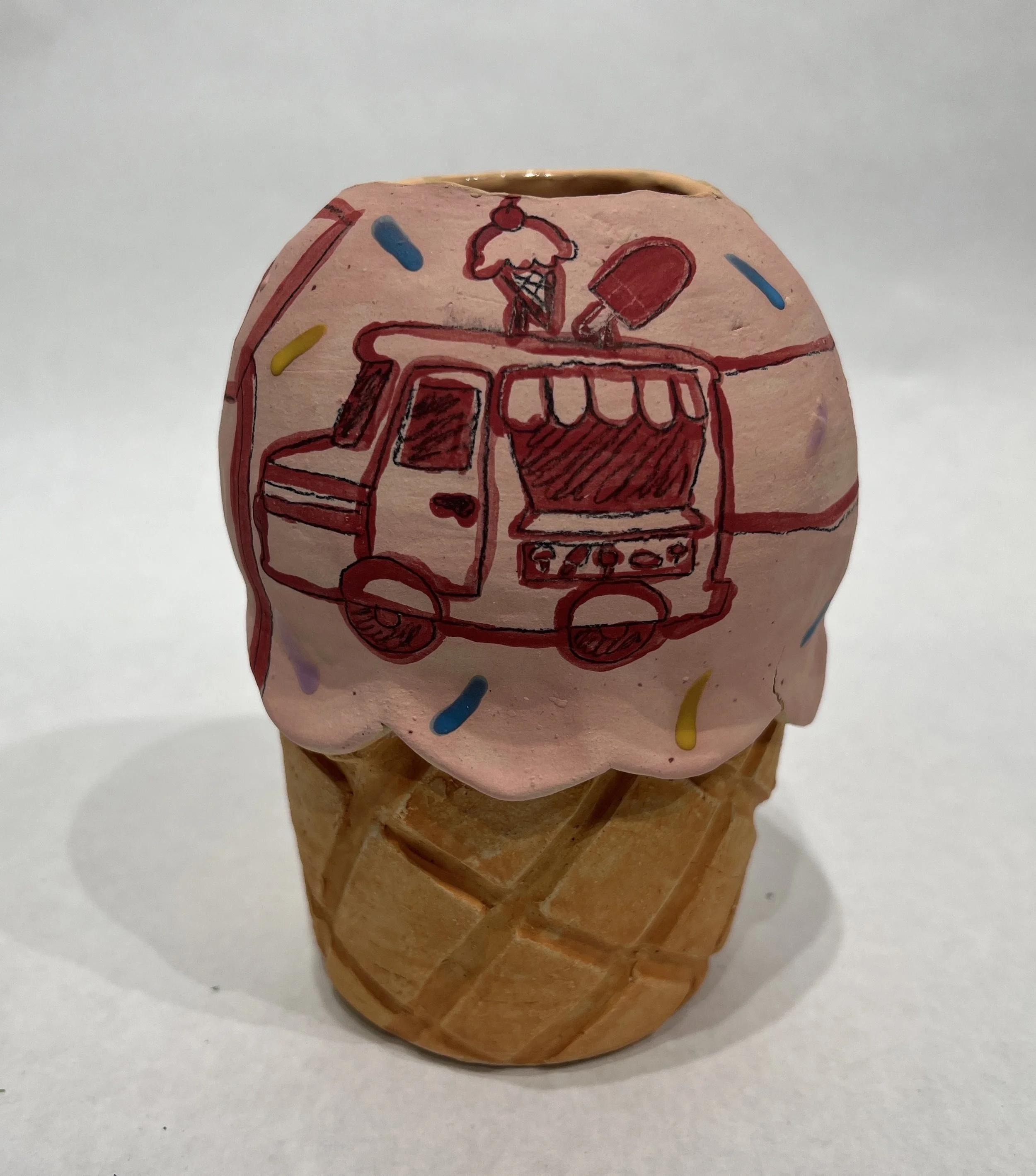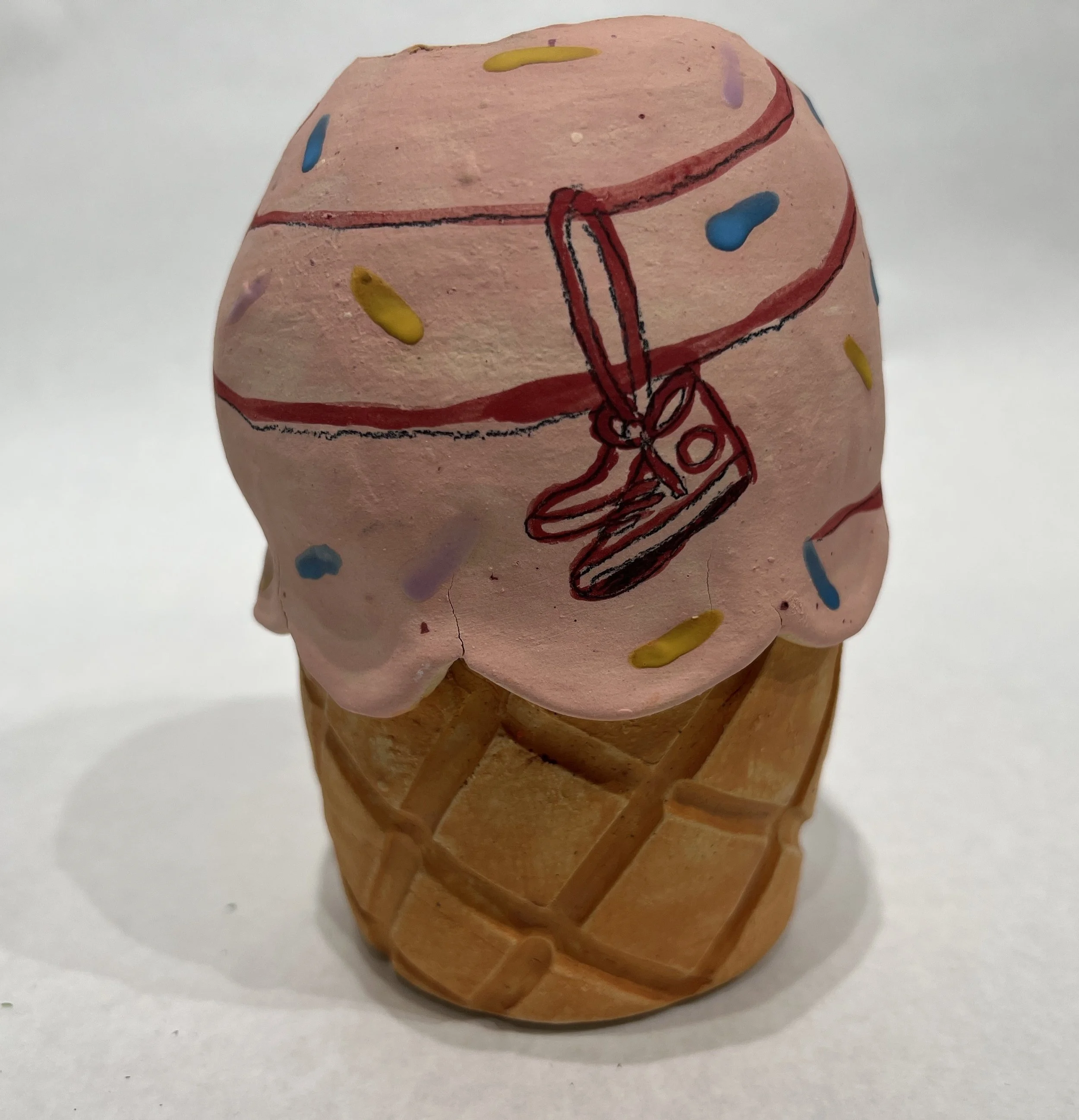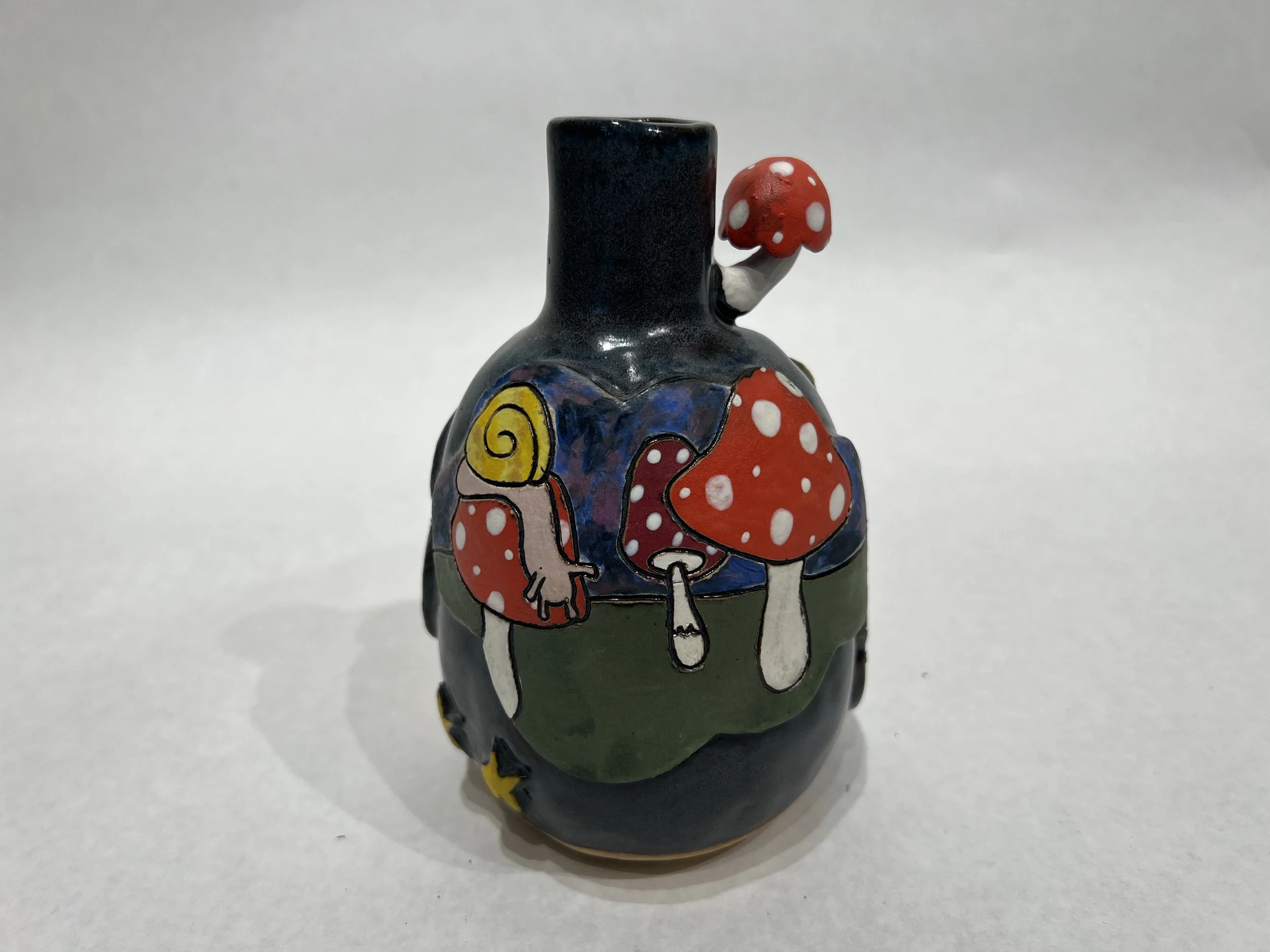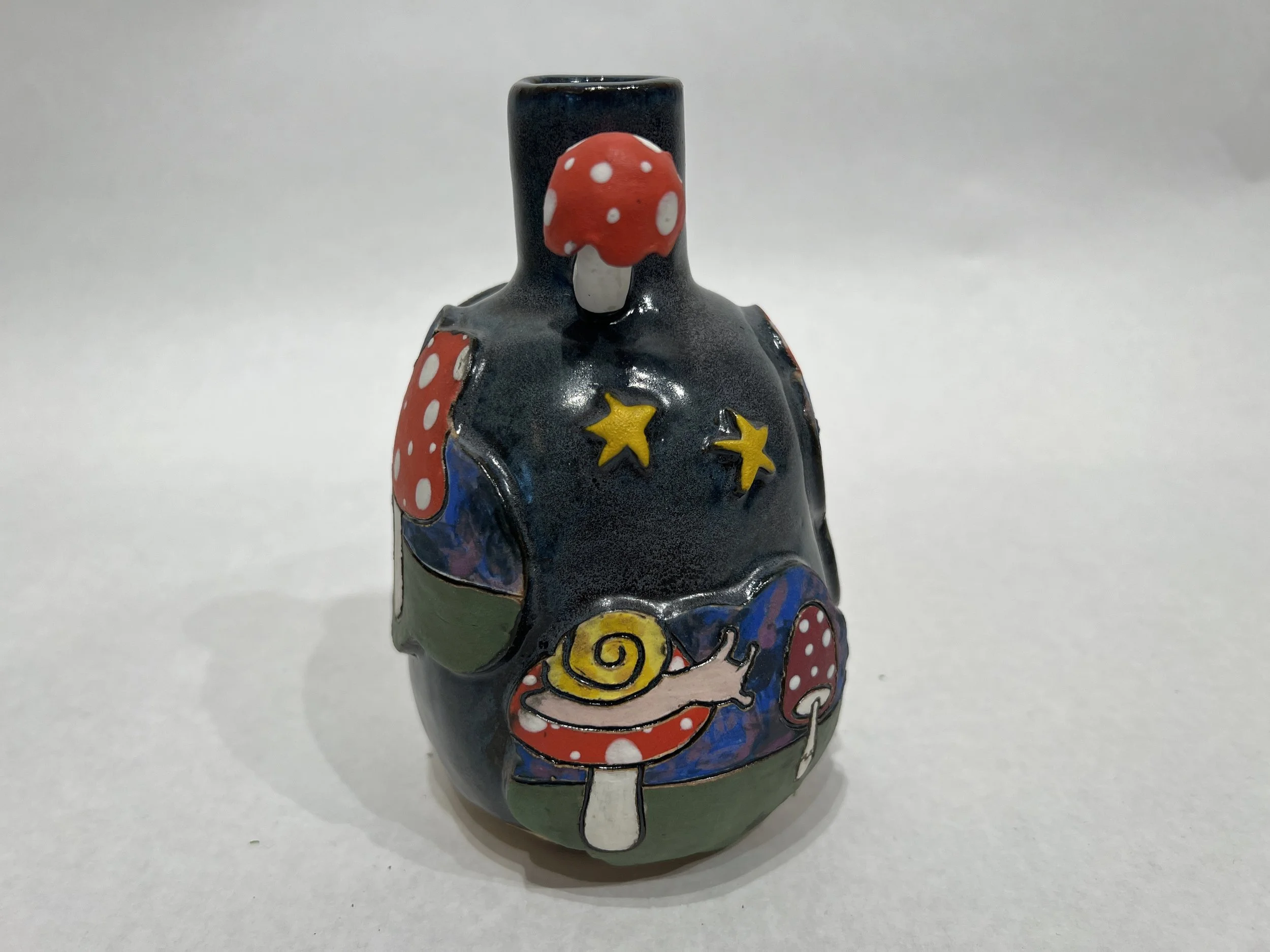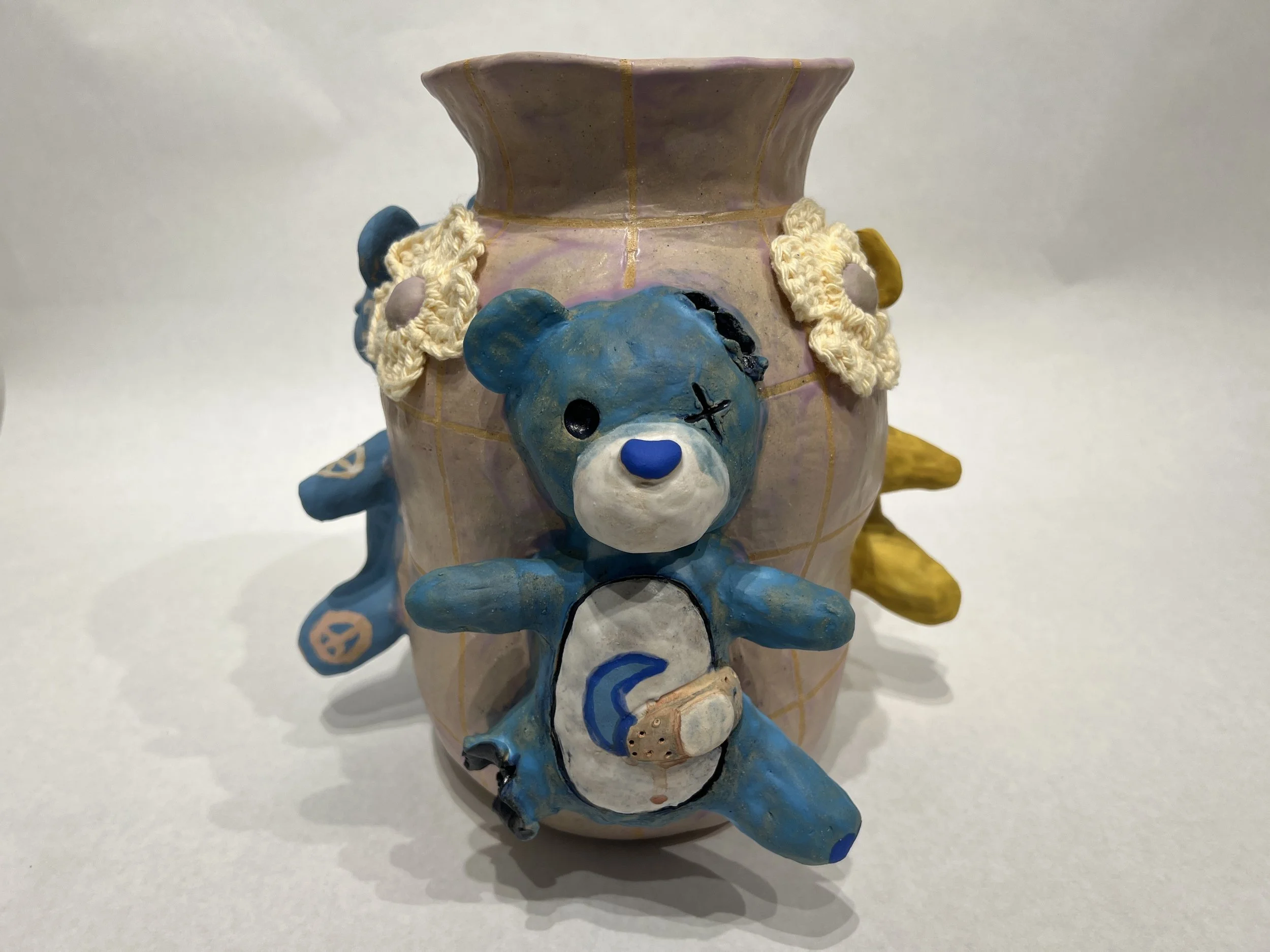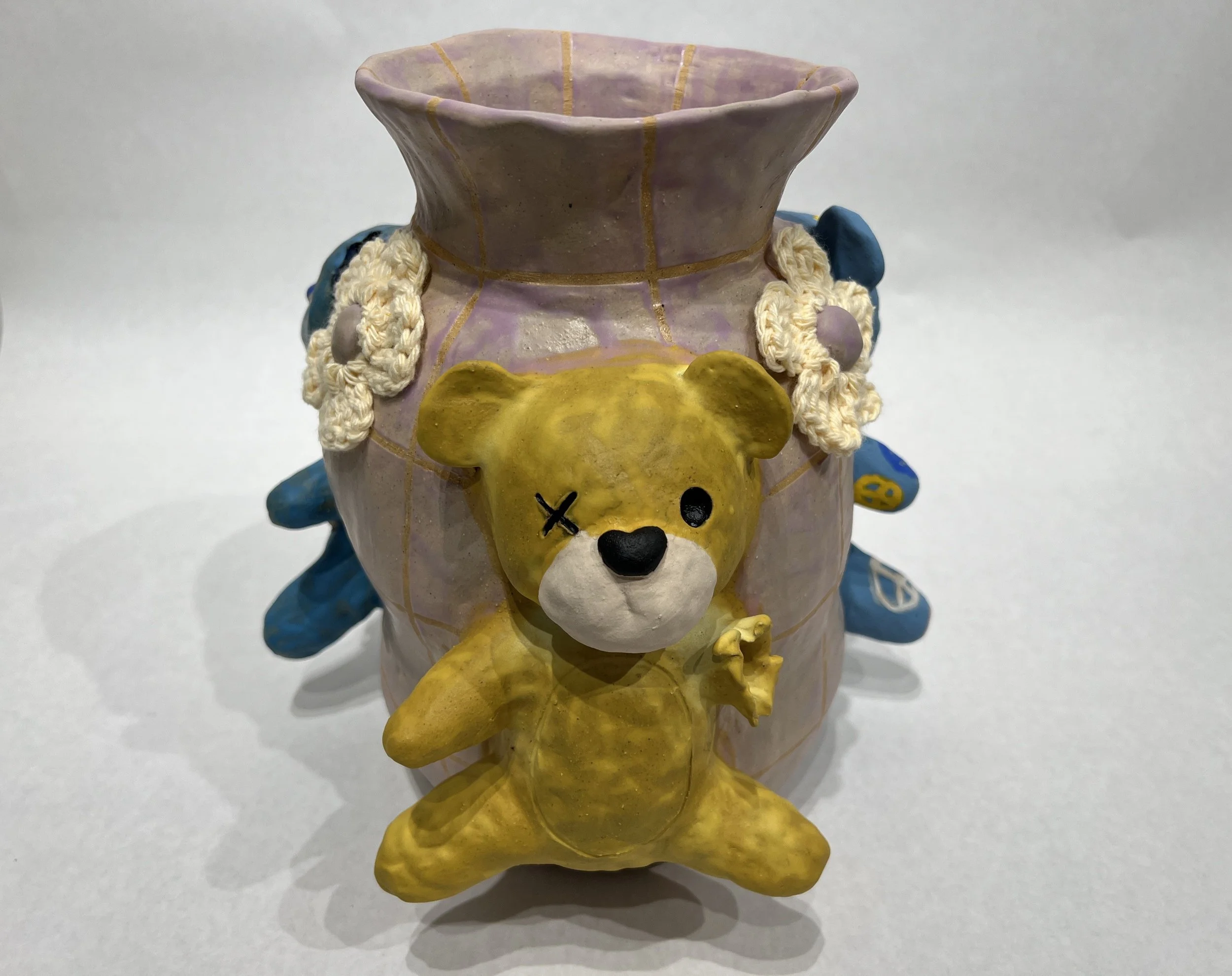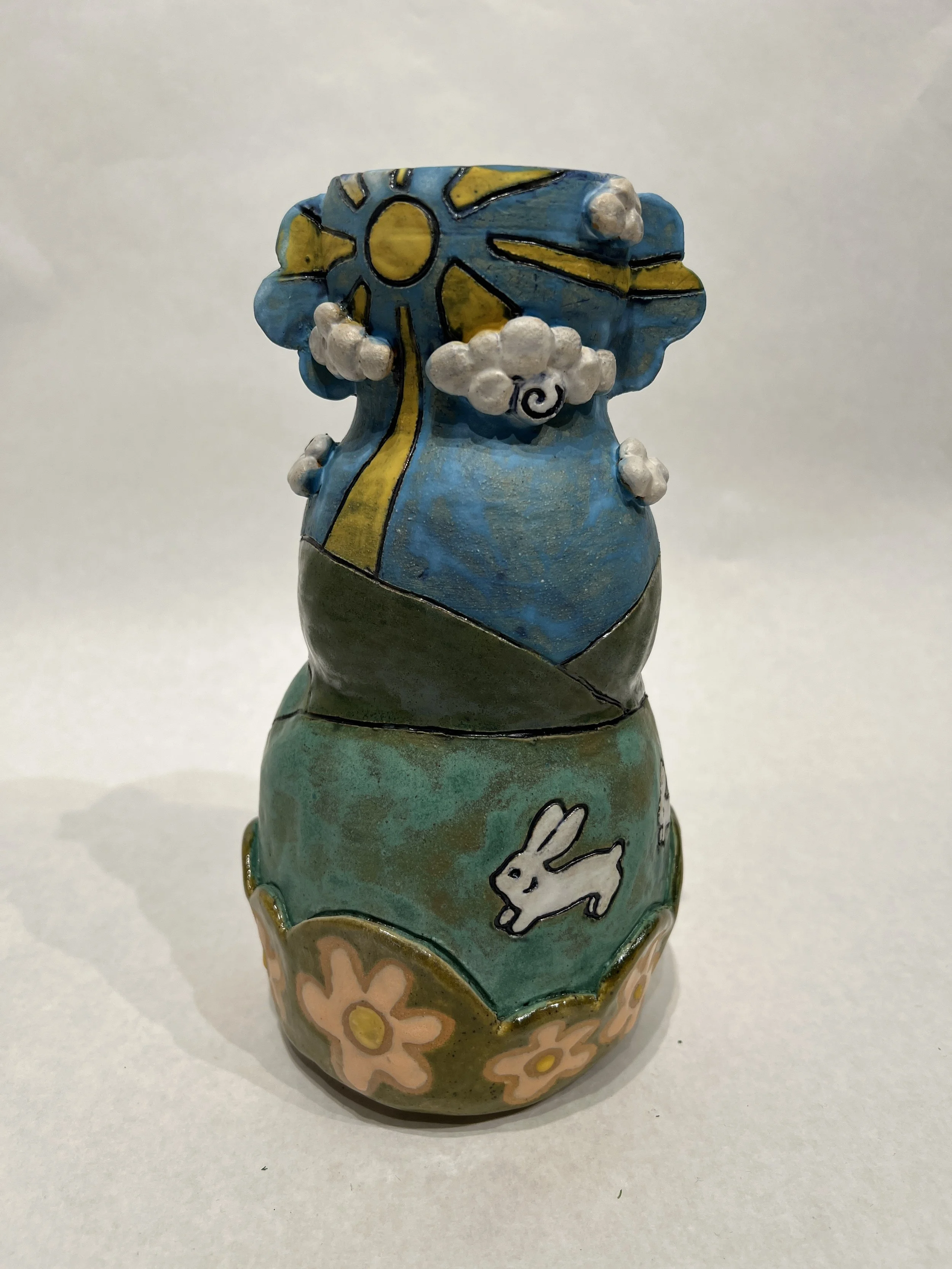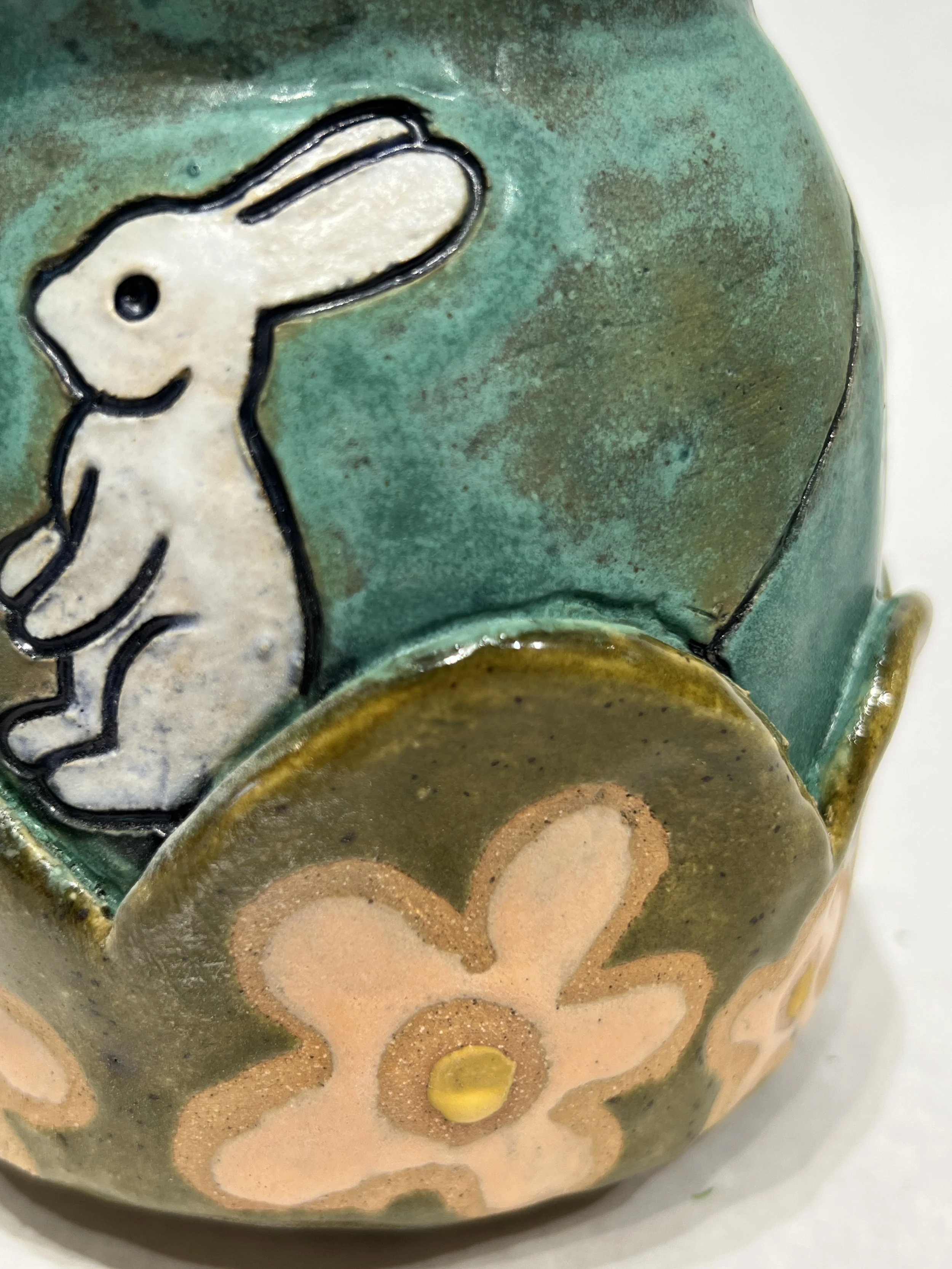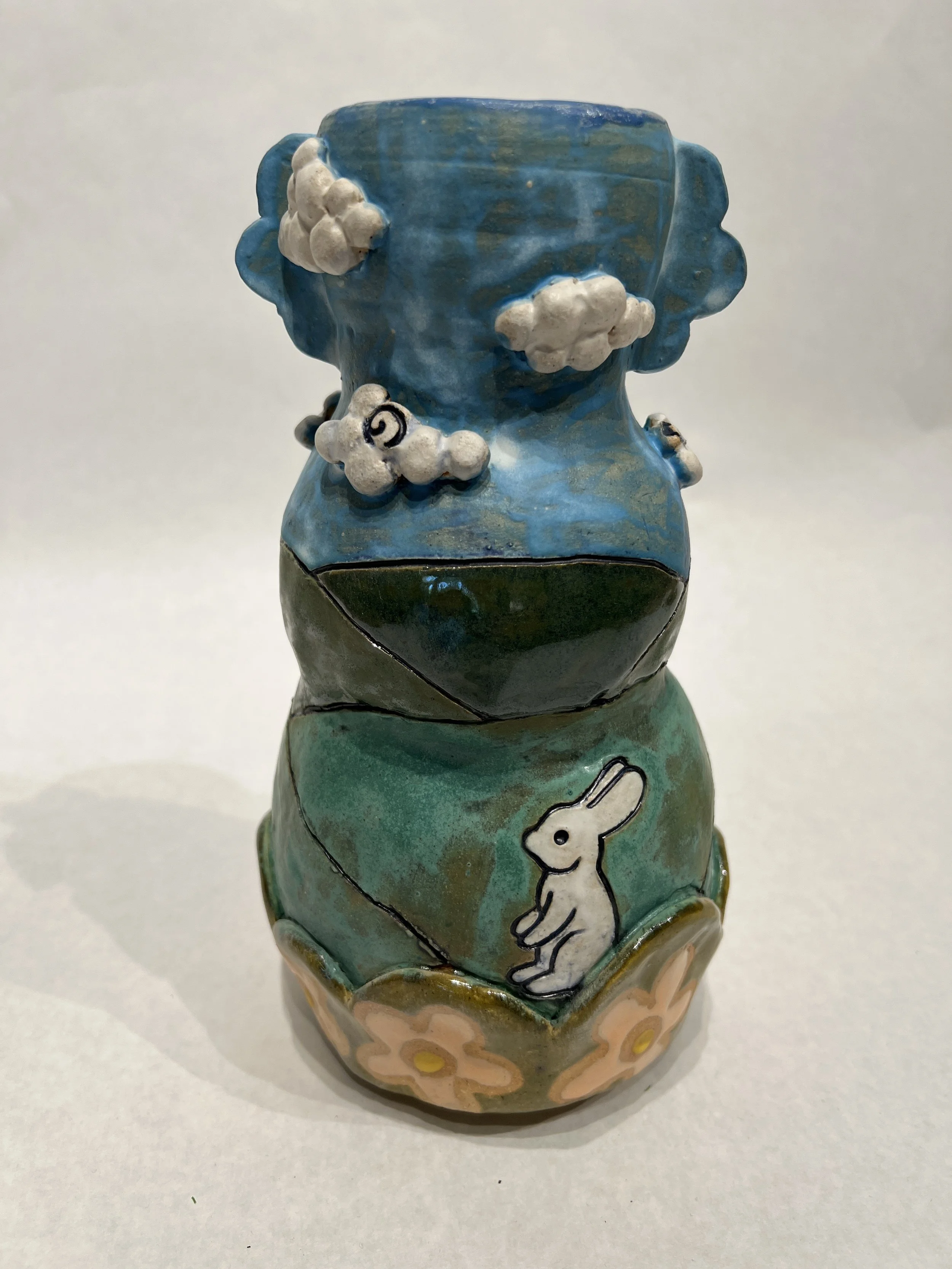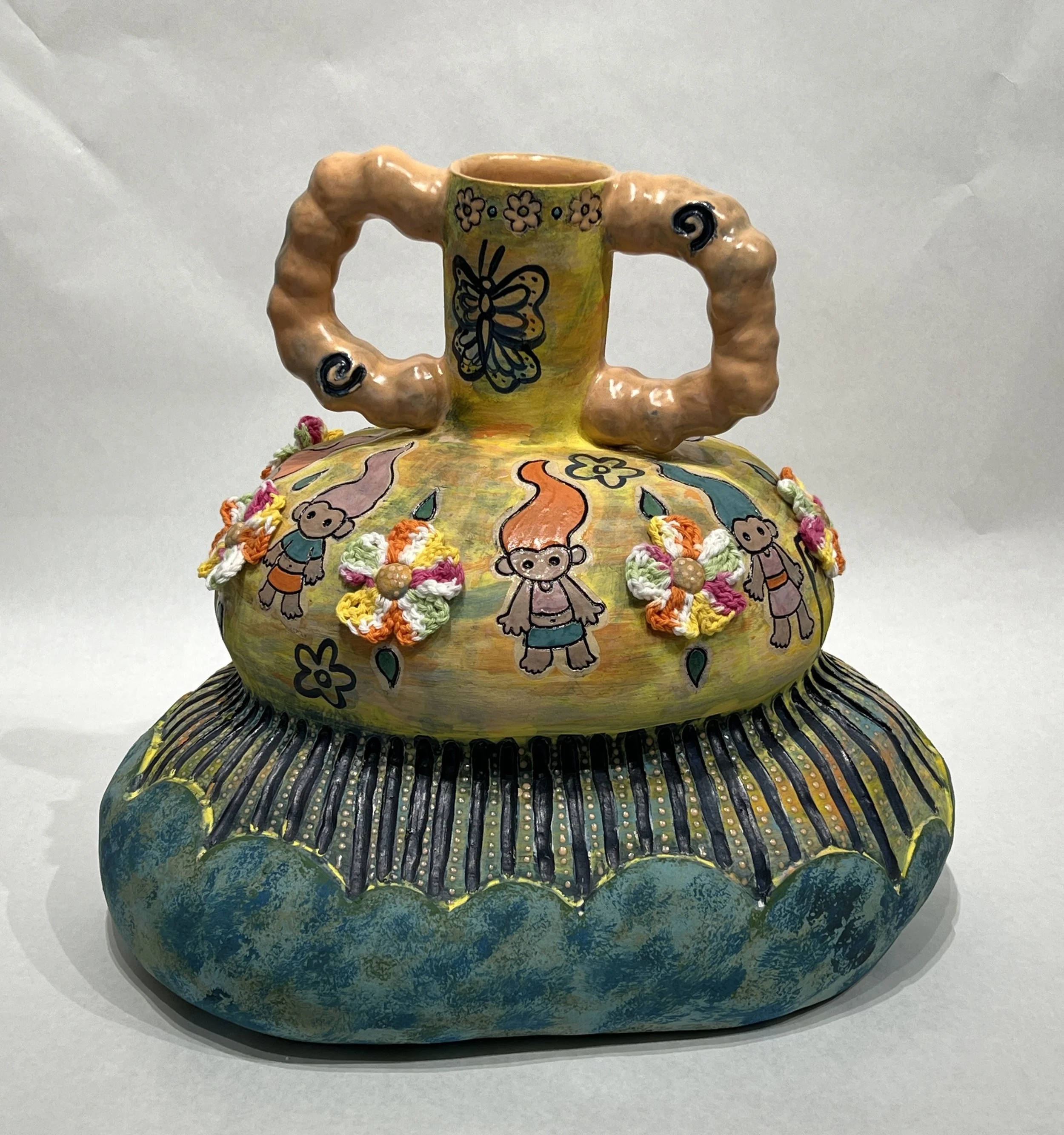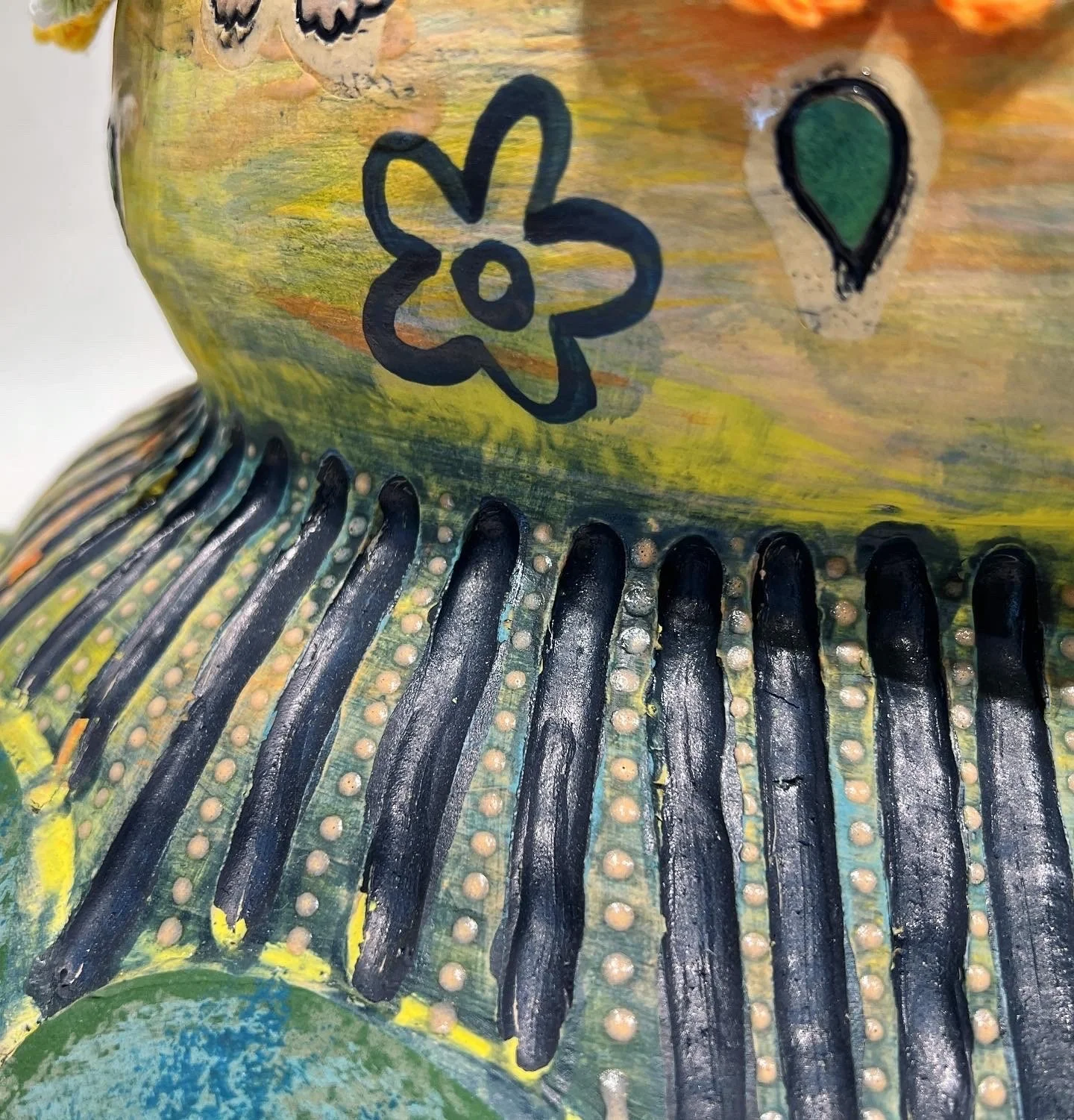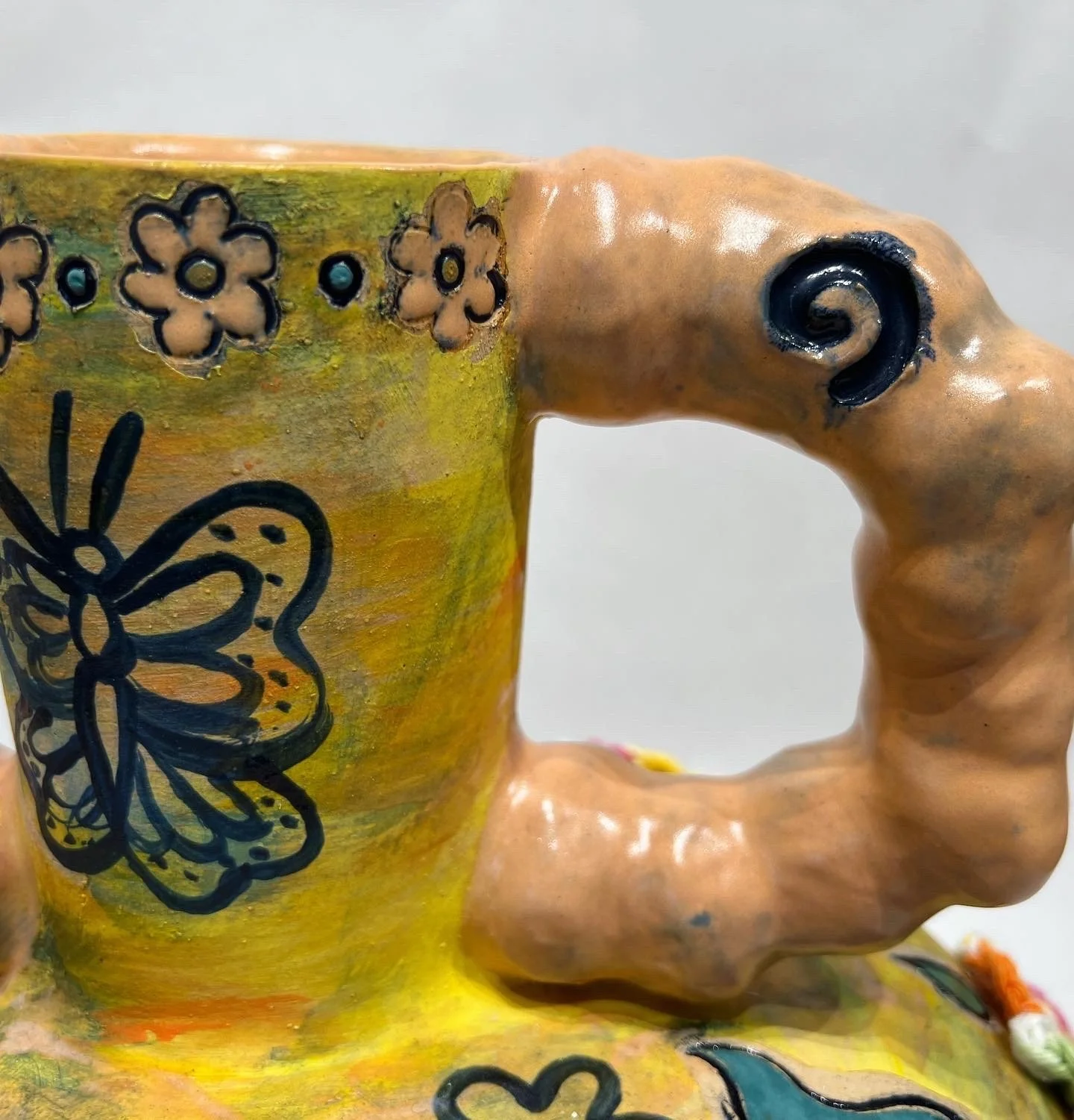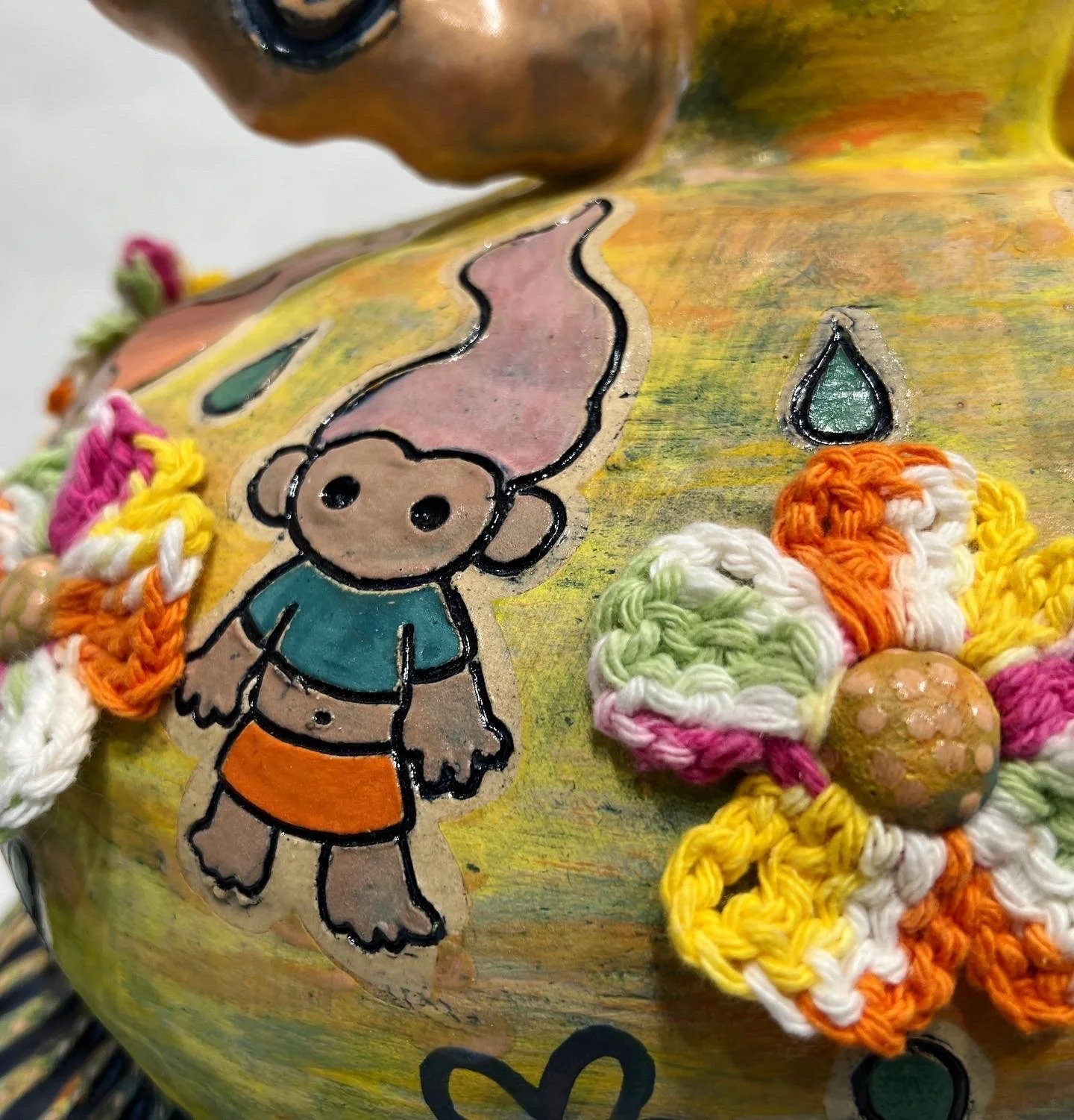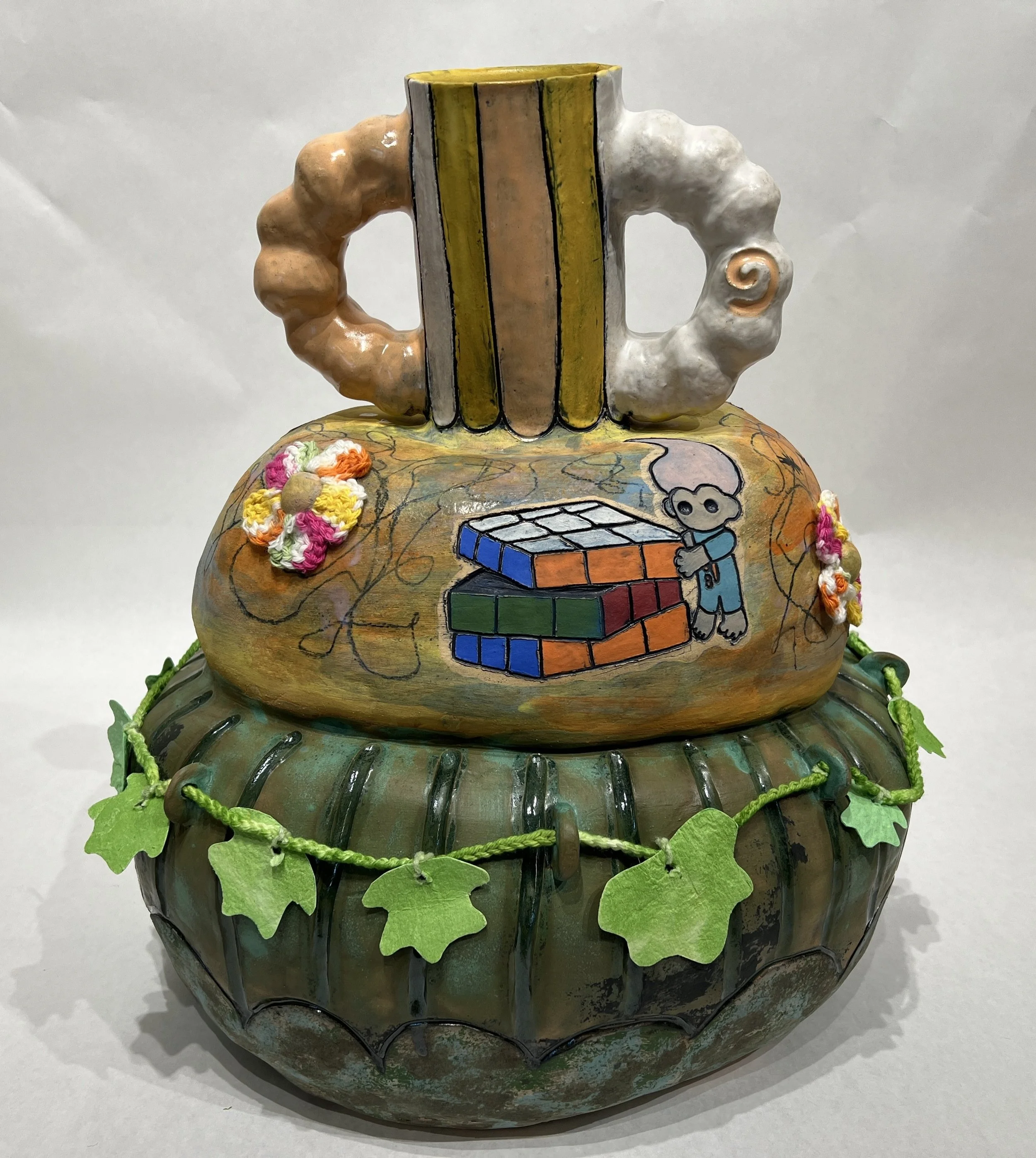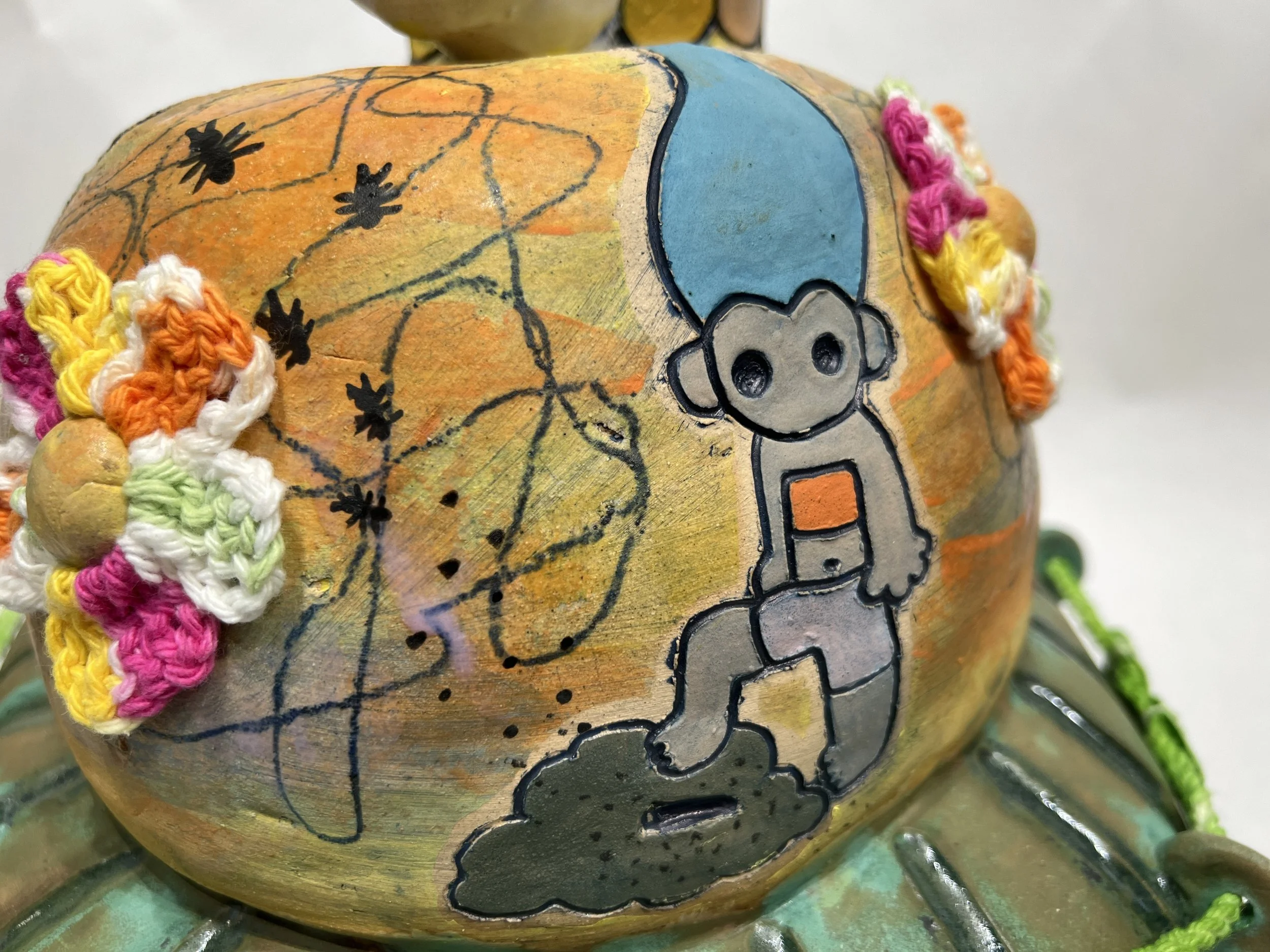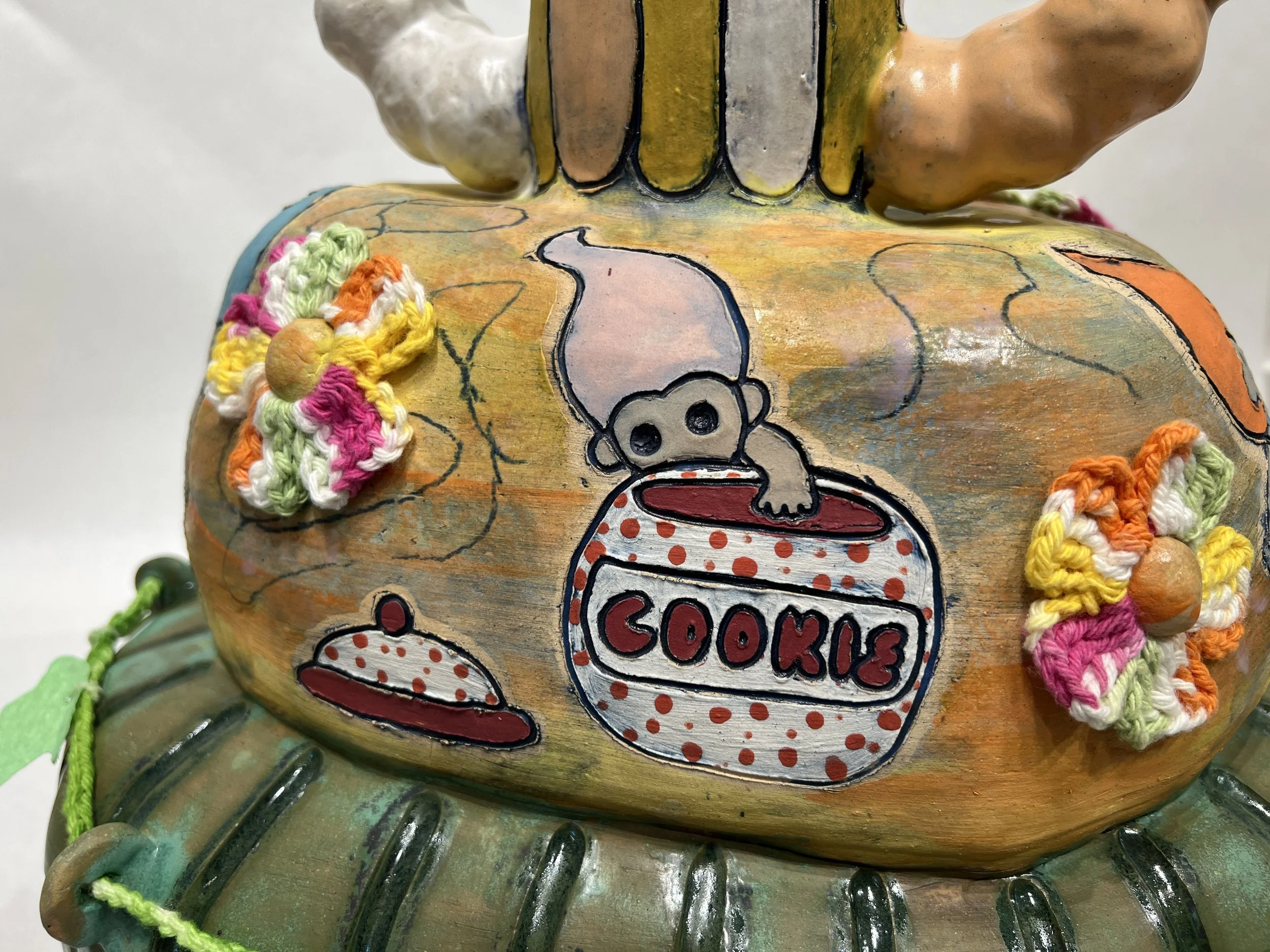What Trace is Left by the Forgotten
My work utilizes various materials ranging from ceramics, paper, insulation foam,
artificial plants and grass, felt, paint, ink, and yarn to form a large-scale, collaged environment
that can be walked through. Evidence of my personal memories through objects, images,
symbols, and motifs are drawn from growing up in the early 2000s; a time period influenced
largely by bright colors, cartoons, obnoxious patterns, weird toys, video games, a terrible sense
of fashion, an increase in technology, science fiction and fantasy novels, and an inheritance of
80s and 90s childhood regalia. The composition of my installation is based off touch-and-feel
children’s books, board games, and play mats. These interactions of play are meant to teach
young children how to differentiate between different types of textures and are influential to my
early stages of growth.
Contemporary artists JooYoung Choi and Jihye Han influence my work
as they use themes of childhood, nostalgia, transience, impermanence, memory, and identity.
Within my installation lie themes of memory loss as defined by Harvard Medical
School’s definition of the transience of memory, “the tendency to forget facts or events over
time”. Throughout this installation, I am thinking of objects and the ability they contain to
conjure memory. By utilizing images from my childhood, I can call into view fragments of the
past that better help to analyze the fragile nature of memory. This ties in with the presence of
themes of nostalgia, what I know as the pleasure and pain in between certainty of the past and
the uncertainty of what is to come, to shape the work as I focus on nostalgia’s ability to offer an
escape or coping mechanism.
Within my ceramic research I am looking at memory jugs or vessels originally created by
the Bakongo people in Central and West Africa. The Bakongo people migrated to the Americas
through the importation of slaves and became prevalent in African American communities in the
Southern State of the United States of America. Memory jugs were originally used as grave
markers and had the capacity to hold water due to the belief that the spirit world was turned
upside down and that they are connected to it through water. Memory vessels would be covered
in cement or plaster or some layer of adhesive and then as the adhesive was still damp, a variety
of objects would then be placed on the surface, a practice that is very reminiscent to collage.
Between this use of collage and the idea of using a vessel to mark that which has passed, I began
to see my body of work as a grave for the childhood memories that have been at the forefront of
my mind for the last year. The flowers placed around the vessels are representative of flowers
being left by a tombstone to honor the dead. The images, symbols, and components in my work
are now representative of a desperate attempt to use nostalgia as a tool to remember the past.
I am creating a grave to honor the child I once was, put the past to rest, and to keep on
living.
By analyzing my past and then celebrating who I have become because of that past I am
able to live better in the present. By looking at the troll dolls, the Furby, the doll house, the
Pollypocket, the ice cream cone, the lost pet, the notebook notes, and every other detail found
within my installation work I can come to terms with who I am now based on who I was then.
This desire to understand the past is a reflection of the desire to understand my identity, one born
from early 2000 influences and one that grows through the practice of art, something that has
only come to my attention recently and that I am excited to keep pursuing through the work.

